Half 11: The Apex Interviews Nikita Bridan
Few cars in recent history have garnered as much attention and admiration as Porsche's prototype 'Half 11'. It's the creation of Nikita and Iliya Bridan, Canadian twins who dropped out of high school at 13 to study car design in Italy. We had the pleasure of chatting to Nikita about the Half 11, modern car design, and what's next for the brothers and their creative playground 'Oil Stain Lab'.

Custodian, the business that powers the Apex, has just launched car insurance designed for enthusiasts. So if you're an existing Custodian user, you can apply directly through the platform 24/7, and if you're not yet a Custodian user, sign up here and check it out.
Archie Hill interviews Nikita Bridan for The Apex by Custodian. Recorded and produced by Archie Hill. Transcribed by David Marcus. Edited by Archie Hill.
Nikita, welcome to the show!
Awesome, thanks for having me, I am excited.
My pleasure. I remember seeing the Half 11 on my Instagram and just thinking that it was the wildest thing I'd ever seen.
Yes, that was kind of the brief, we had a 911 tub and we spent about a year thinking what we could do with it. We had built a few 911s before, and it's obviously a crowded field, you have amazing stuff in the Porsche community, Singer, Gunther Werks, Tuthill, so many different takes, and ours is probably the most, maybe unhinged, one.

I think it definitely is, no doubt about that! But before we get into the Half 11, obviously now you are an accomplished designer, but I want to go back a bit to your early years. Were you surrounded by cars from a young age?
Yes and no. My brother and I, we grew up in rural Canada. There was no car community there. I remember getting excited when I would see an Audi, that's the level of cars that we were exposed to as kids. But we did travel a lot and we went to Europe, and we were in Spain one year and we saw a Diablo, and the guy in the dealership let us sit in it. That was it, that became the dream car, and we were just drawing cars from then on. It was a single path from six or seven years old.
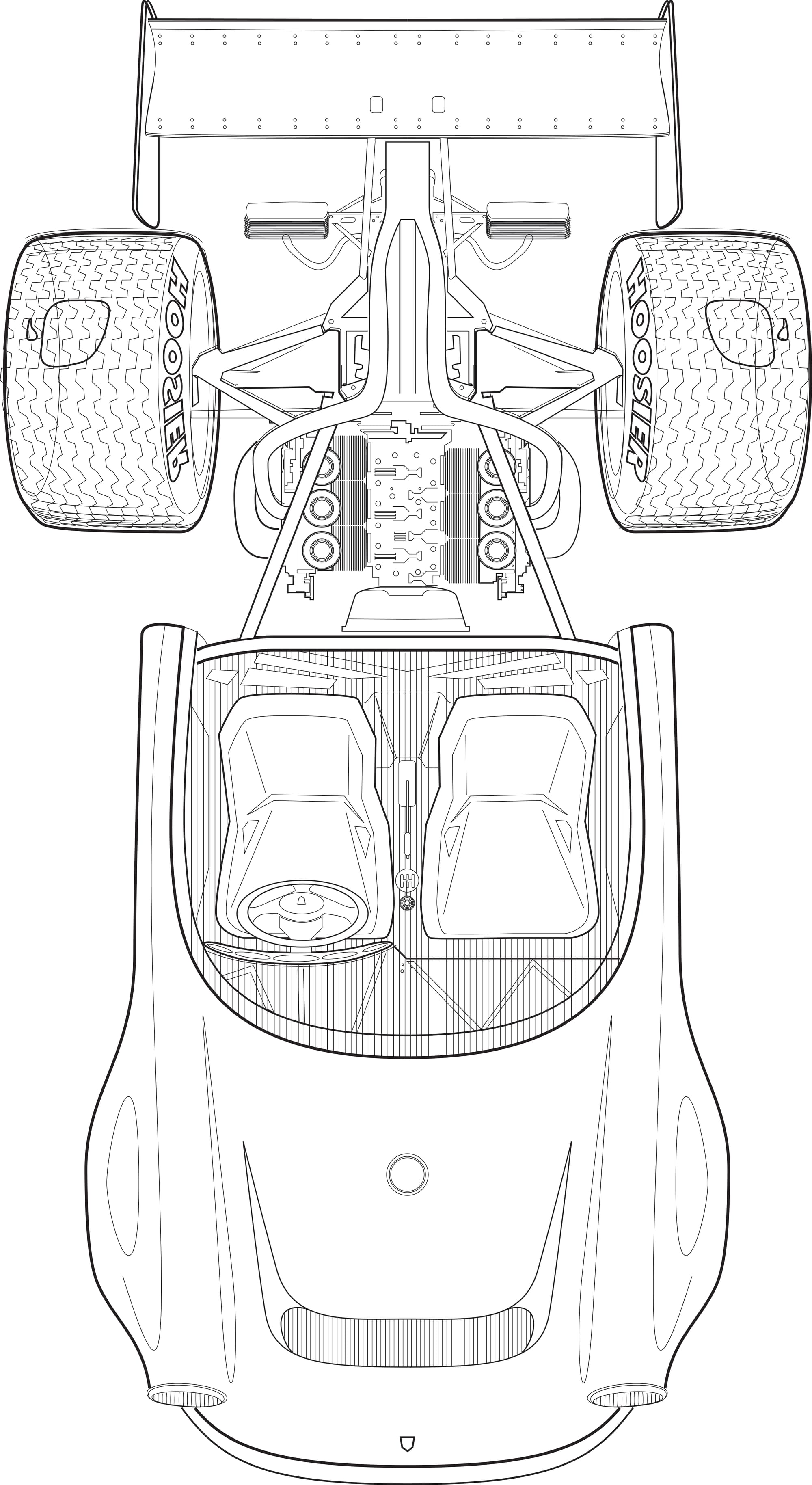

That was the dream, to become a car designer from a young age?
We pretty much were hell bent on that. My grandparents lived in England, so another key moment was seeing that McLaren F1 in London in that little store. I have a very unhappy photo of us standing there next to the car, but it was a very pivotal moment. I think that car probably inspired so many other designers or motor sports or gear heads. But after that, that was it, we wanted to be part of this, we wanted to be car designers. At 13 we basically dropped out of high school and at 14 moved to Italy to study car design. So yes, high school dropout.
That is insane, dropping out of high school and going to study car design in Italy is probably the one of the coolest things I have ever heard, and it does sound like the actions of someone who is dead set on becoming a car designer, but that's a huge decision, were your family quite supportive of that?
I think the parents, they both have PhDs and are incredibly smart and accomplished, I think they thought it was a phase that we would grow out of. We did get good grades, we were good students, we just had no interest in math or being a lawyer or being a doctor. Eventually they gave in and supported it, but I still do believe they thought it would be a phase, that we would grow out of it, that we would stop drawing pictures of cars and choose a real career, but they did support us.

Could you maybe talk me through a little bit about what it was like actually studying car design over in Italy?
Looking back at it now it's vastly different. Afterwards we went and we studied in California as well and worked professionally. But in Italy, for us it was the dream, Pininfarina, Giugiaro, Bertone, Gandini, the icons of design. We were young, we were sponges, so we picked everything up. The Italian approach, I remember we had an ergonomics class. You would think ergonomics is about making the human comfortable inside the car, and in Italy in that class, they were no, your car is ugly, the side view is ugly, let's recline the human back, let's slide them, they were just doing these weird things with the human driving position just to get a beautiful exterior. In a way I think that sums up a lot of the reasons of why Italian car design is so aspirational and romantic. It's this beautiful idea, and yes, there are some compromises, but when you are in the car, the car looks so good, who cares? It's a very distinctly different approach than more of a German or Japanese approach. In California for example, the school just emphasized art and visuals and creating the most beautiful sunset renderings, because we are blessed with amazing weather here. So the artistic value was very important here in California, less so in Italy. There's these profound differences of skill sets and what they emphasize.
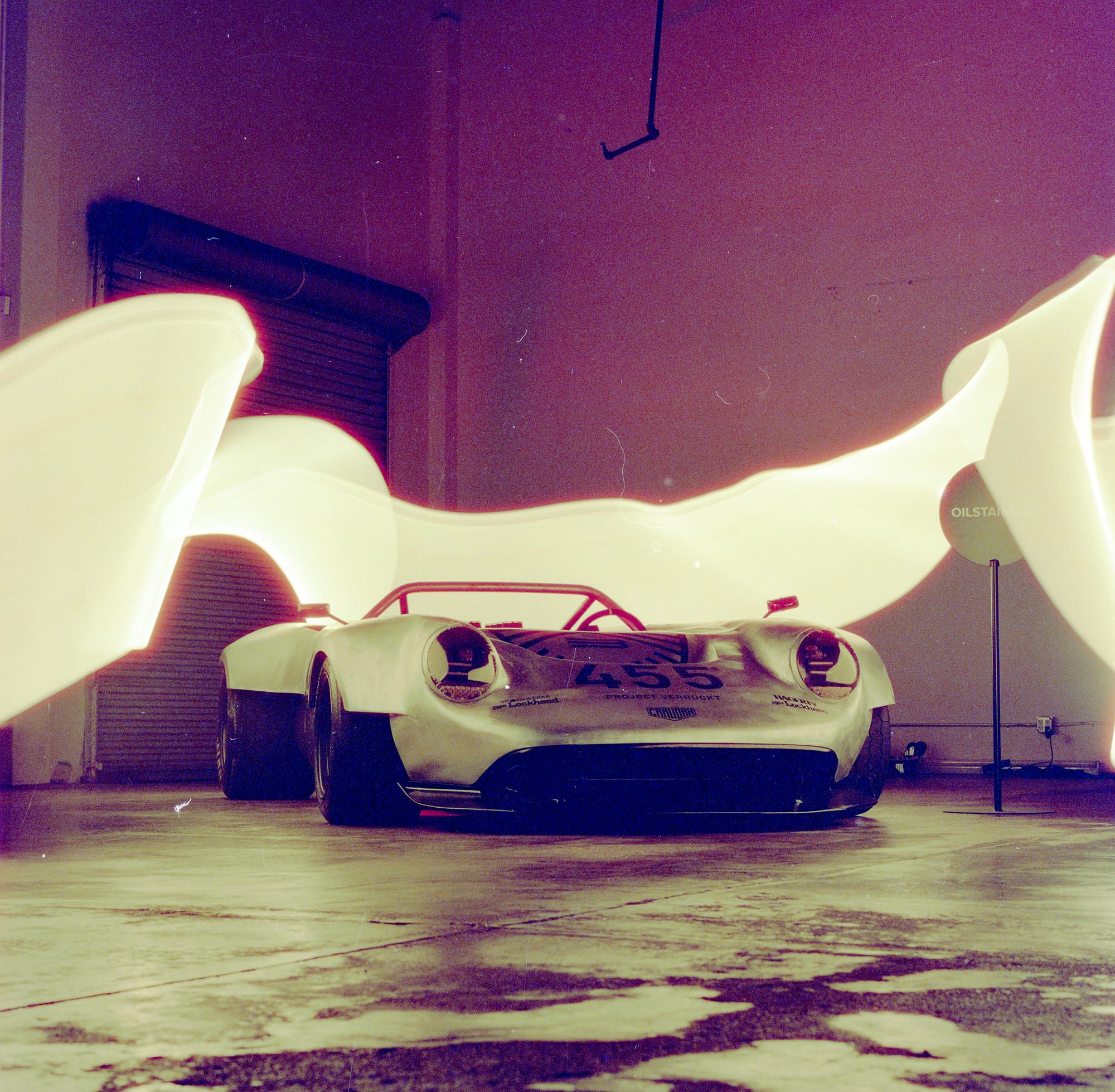
Source: Oilstainlab // Edited by Archie Hill
If you have to boil it down, what would you say is your key takeaway from studying car design in Italy, that you have then applied later on in your career?
It's funny looking back at it, but it really set the basis for what Oilstainlab became. In Italy it was basically coach building, the romanticism, the idea of what a car could be. Then California informed us a little bit more with storytelling, the whole Hollywood connection, and obviously the technical skills, the digital skills that we later learned, and that became Oilstainlab. We are basically two ingredients.
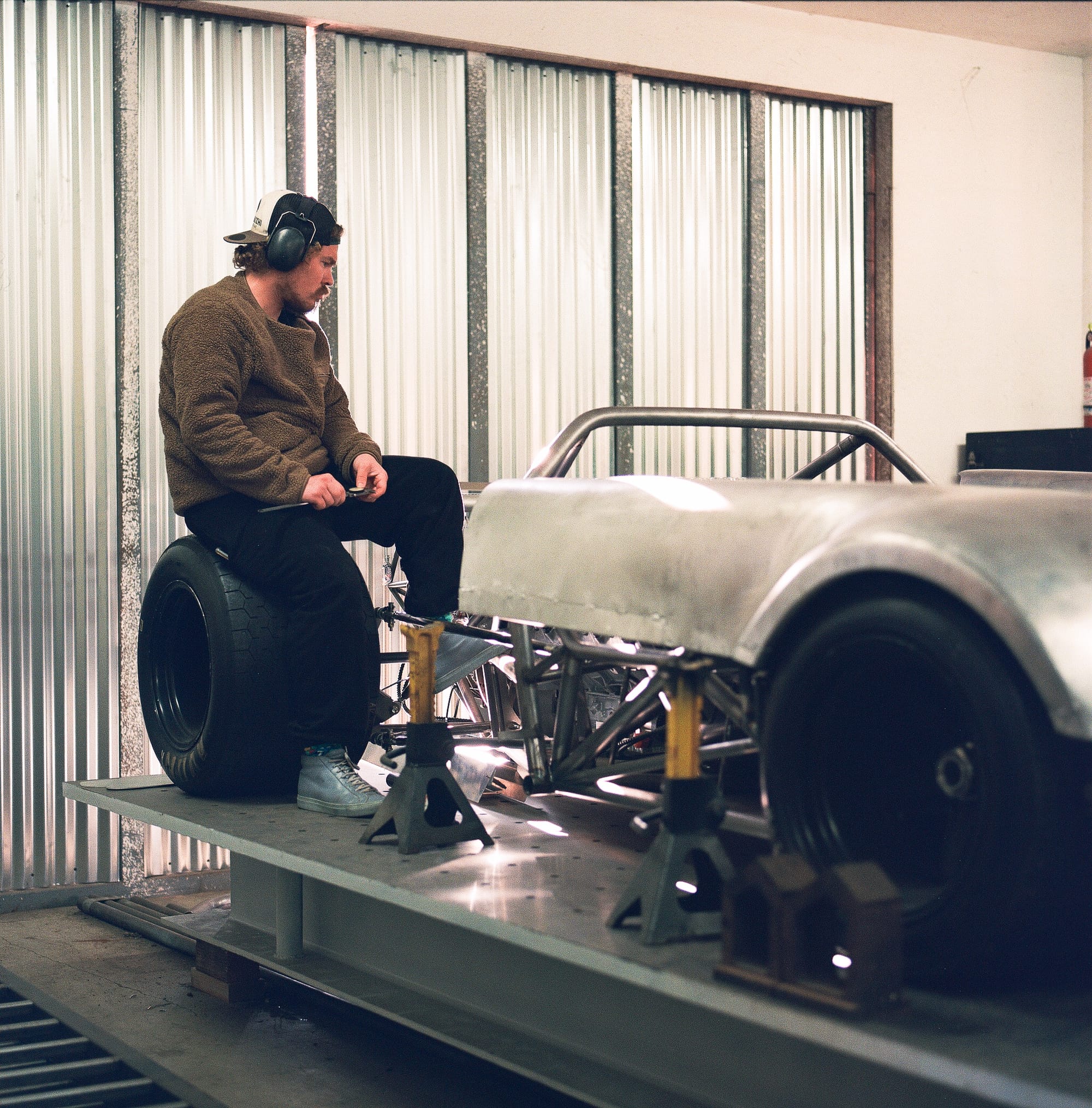
Yes, fused together. You didn't go and start Oilstainlab straight after studies, I believe you went and worked for some big brands like Honda, is that right?
Exactly, after moving from Italy, studied here in Pasadena, then our first job, for those that don't know I am a twin, Iliya Bridan is my brother, and we studied together, we did the whole Italy adventure and then California. Then after we graduated we actually got a job offer to go together to Toyota. So we spent a year at Toyota developing some stuff for them, then Honda poached us. So we both together went to Honda. Then he stayed there for six years, he did a bunch of production cars. I think at this point they have built 6.5 million of his designs on the road, CR-V, RDX, then a bunch of the new cars that are coming out. Me personally after Honda, I went to Hyundai Genesis. That was just when Genesis was becoming a brand, so I was part of those strategy meetings. Then General Motors Advanced, which was basically Chevrolet, Buick, Cadillac, all the American cars that you guys don't get over there. Then we worked for a few other companies. There was a Chinese company we worked for, JC. So we have been all over the place, a decade in the OEM industry. We have learned a lot I would say, and that is vital.

What would you say is the best thing about working at those big companies and the worst thing, as a designer?
The best thing is the amount of just sheer talent and skill set and experience that these companies have had. They have been building cars for 100 years, they know how to do it. The people they hire are so god damn talented, so you are constantly learning, you are constantly being pushed, challenged. And just because the cars are ugly, it's not the designer's fault. Trust me, it's not. There's so many cool cars that are in the studio that are designed, then management will just kill it and pick the ugliest one. There are so many talented people, so many cool processes that you learn, and that's vital. The worst part is the speed that things move at, and connected to that, projects get cancelled all the time. I worked on a project for three years, and at the end they were just like all right, crumple up the paper, throw it in the trash bin, that's dead. So you dedicate three years of your life, passion, creativity, sleepless nights, when you go home and you don't know how to solve this, then they just take it all back and shoot it, it's tough.
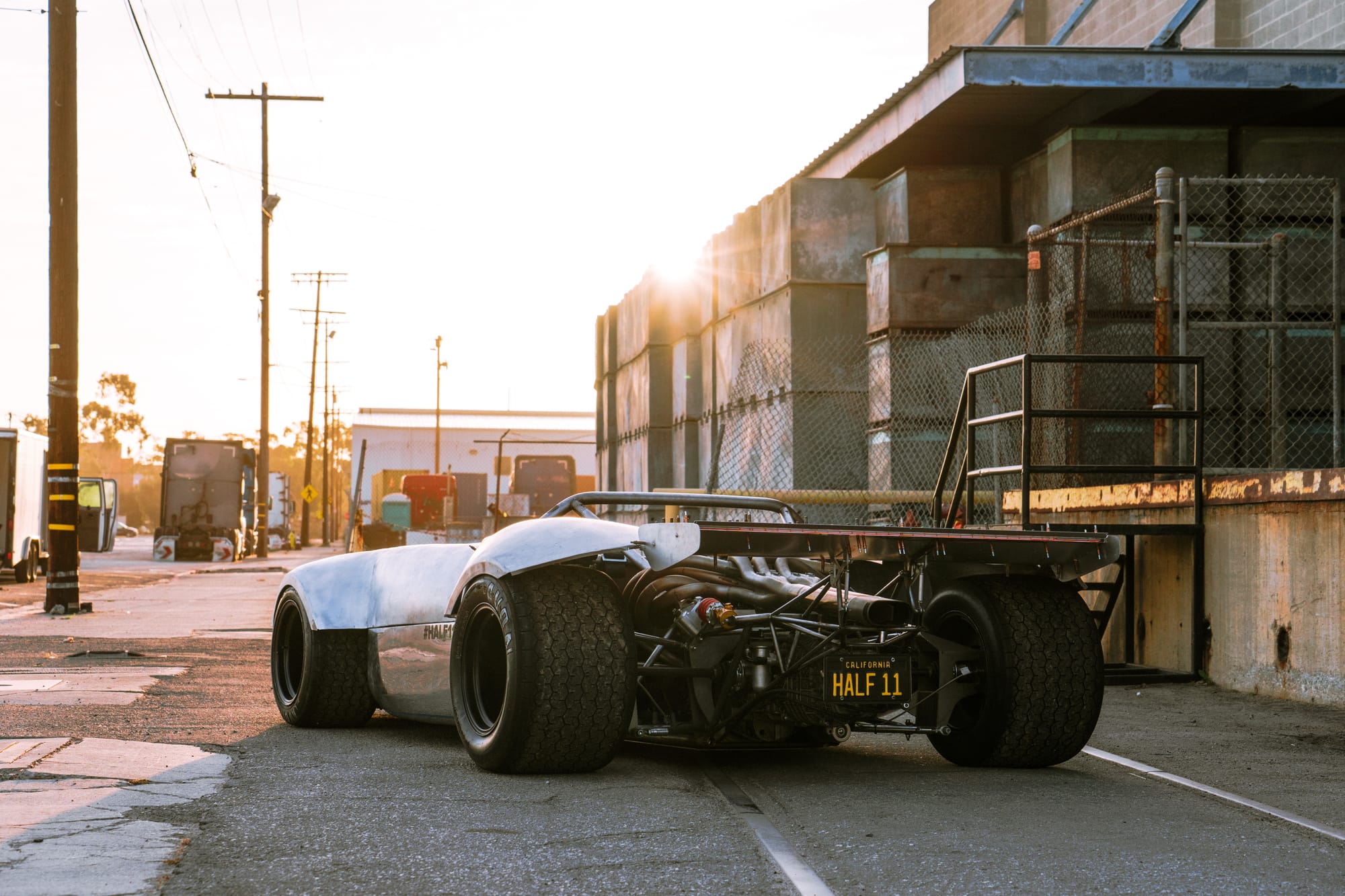
There are a few things I want to unpack there. The first thing you said was about modern car designs being a bit ugly. I was actually watching a video of Ken Okuyama, the former head of design at Pininfarina. He was on Jay Leno and he was talking about the KODE 57 that he designed, and he said that modern car design was getting so complicated and that was somewhat attributable to branding. These companies want you to look at the car and know exactly which company it belongs to, do you agree with that and what are your thoughts on modern car design more generally?
I agree with that to a degree. Part of what I was doing a lot was basically brand strategy. I was probably part of four rebrandings for four different brands, where the only thing they cared about was headlight, DRL shape and grill shape. Let's come up with a grill shape that no one else has, which is how you end up with a Lexus Spindle or weird shapes. So yes, there definitely is an element to very branded, you have to stand out. Part of it is just the way we consume information. We consume images these days. We are very overwhelmed on social media, on the internet, everything, and it becomes difficult. I think also it speaks to like a lack of confidence from brands. Porsche is not really chasing something new, they are just confident in what they do. If a brand is unconfident, then they will create this weird shape that no one else has done because they will stand out, but that is not the solution. The ugly part of modern cars is honestly just legislation. There's a lot that goes into crash in terms of clearances and volumes, that's why the cars are getting bigger and more bloated. You can't really have too many sharp edges. Granted, Cybertruck just doesn't care, but it is a very difficult environment. Everything is designed by committee, let's not offend anybody. Let's ask the 65 year old white guy what he thinks. It's not what it used to be in the 70s, I will say that.
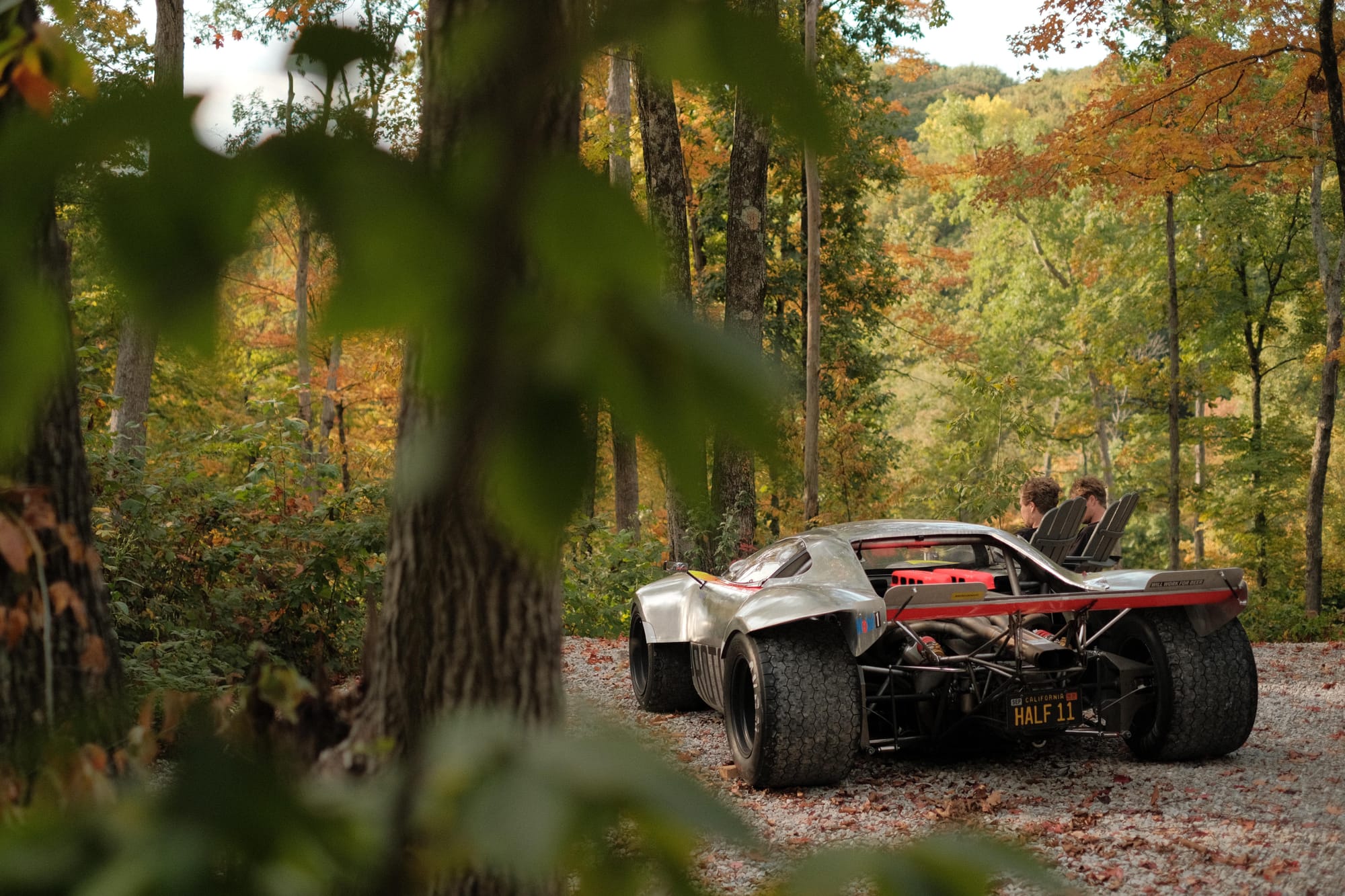
I get what you are saying completely. Is that bureaucracy the reason why you set up Oilstainlab so that you could choose your own projects and have complete freedom from a design point of view?
Yes, exactly. We were doing quite a few freelance projects. People were approaching us to do stuff, so there was a need to create that. That part of Oilstainlab no one has really seen, and we can't take any credit for that because it is all behind NDAs. We needed to create something that people would see us doing, which was basically the genesis of Half 11 to create a business card.
Could you maybe touch on the evolution of Oilstainlab, because I know you have done a few projects now. I have seen the dropped Alpha that you have done and the retro 911 and obviously the Half11, where did it all start and what has the evolution been like?
Oilstainlab as an idea started back in 2013 actually. We started the company then, only to realize what we were doing was illegal because we weren't US citizens and we weren't allowed to start our own company, so we shut it down three weeks later, and it basically laid dormant until 2019. But the idea was always at its core, Oilstainlab was a creative hub, an enabler if you will. That's why it's not Bridan Design Studio, it's not our last name, it was really supposed to be a much bigger thing. There were a few people involved at the start and it was kind of an art collective, let's say. Then it slowly evolved into just my brother and I, because we were stubborn and said this thing was not going to fail, we were going to keep going. We kept doing Oilstainlab but it was very much a design consultancy at that point. It was not even the old cars or anything, we were working on things like headphones or coffee, whatever was kind of linked to automotive, but got us outside the corporate world. If it was interesting, we would do it. If it was boring, we wouldn't do it. Then basically it became the vintage builds that you are talking about, like dropped Alpha. We built a GTV6, a safari car for either Aether, obviously the Hoonipigasus, the Ken Block one. So yes, it became that, and I think that was tied also to the Half11 progression. Then in the future, Oilstainlab shifting to be more of a boutique builder, let's say. There is a new car that will come out probably this year, that will probably shift everyone's expectations of what we are again. It's fun to pivot and explore what's possible.


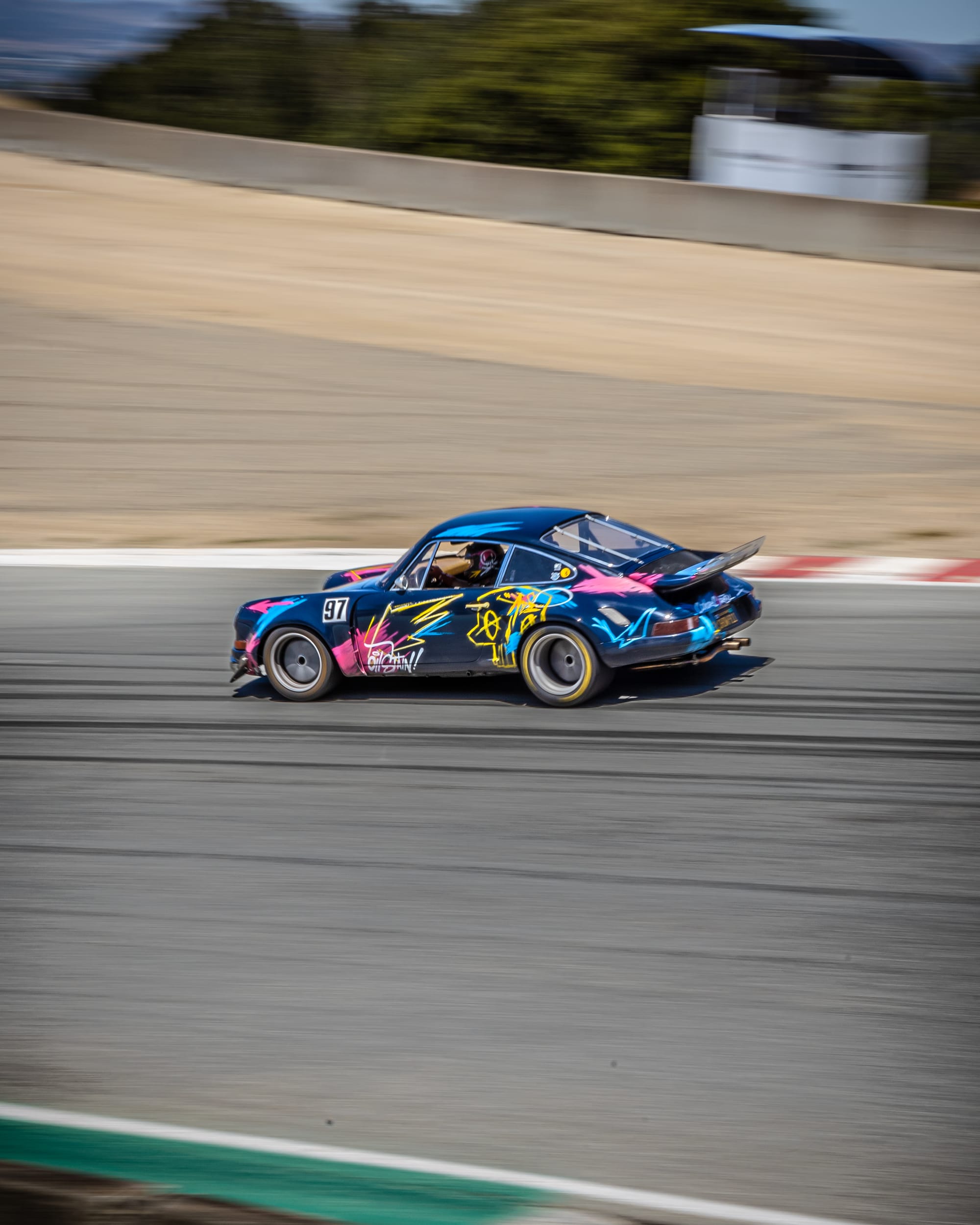
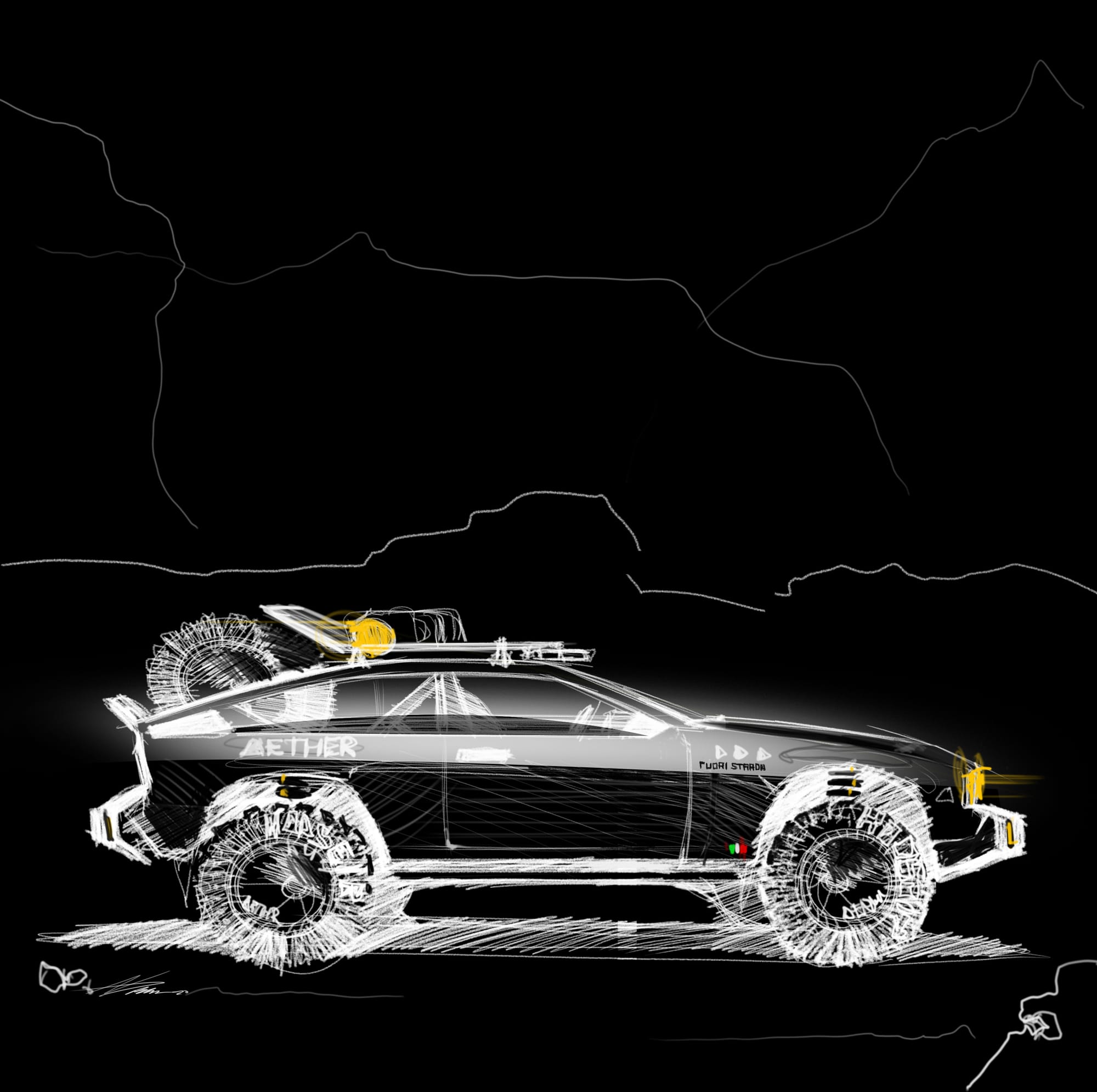
That sounds exciting, it's almost like your playground when you're describing it, you just pick and choose whatever resonates with you as designers. On the Half11 in particular, did that have an origin story, why did you want to create that one because that's gone pretty viral on social media. You were already on the map but it definitely got you a lot of attention, that's for sure.
I think there were a lot of interesting things happening. You have to go back to 2018, 2019 when that project was starting. For us the whole point of the Half11 was a business card for the design studio, but really we wanted to tell a story. We are obsessed with stories and when we looked at the car space, the only car stories that were happening either on TV or social media, were like oh, there's a show coming up, we need to finish this car in a week. There's that fake pressure or they all fell into these categories. So we wanted to tell a story that would resonate with not just car people, we wanted it to resonate with people that are fans of history, people that are fans of science fiction, of fantasy, and create a little tribe that way. There was also the whole disinformation thing starting with the Donald Trump elections and all that stuff way back when, so that was top of mind. What's real, what's not real, so we were playing with all these things and how do we intertwine all that. It became a visual diary, a little concept of how to tell a story, then obviously this car came out of it.
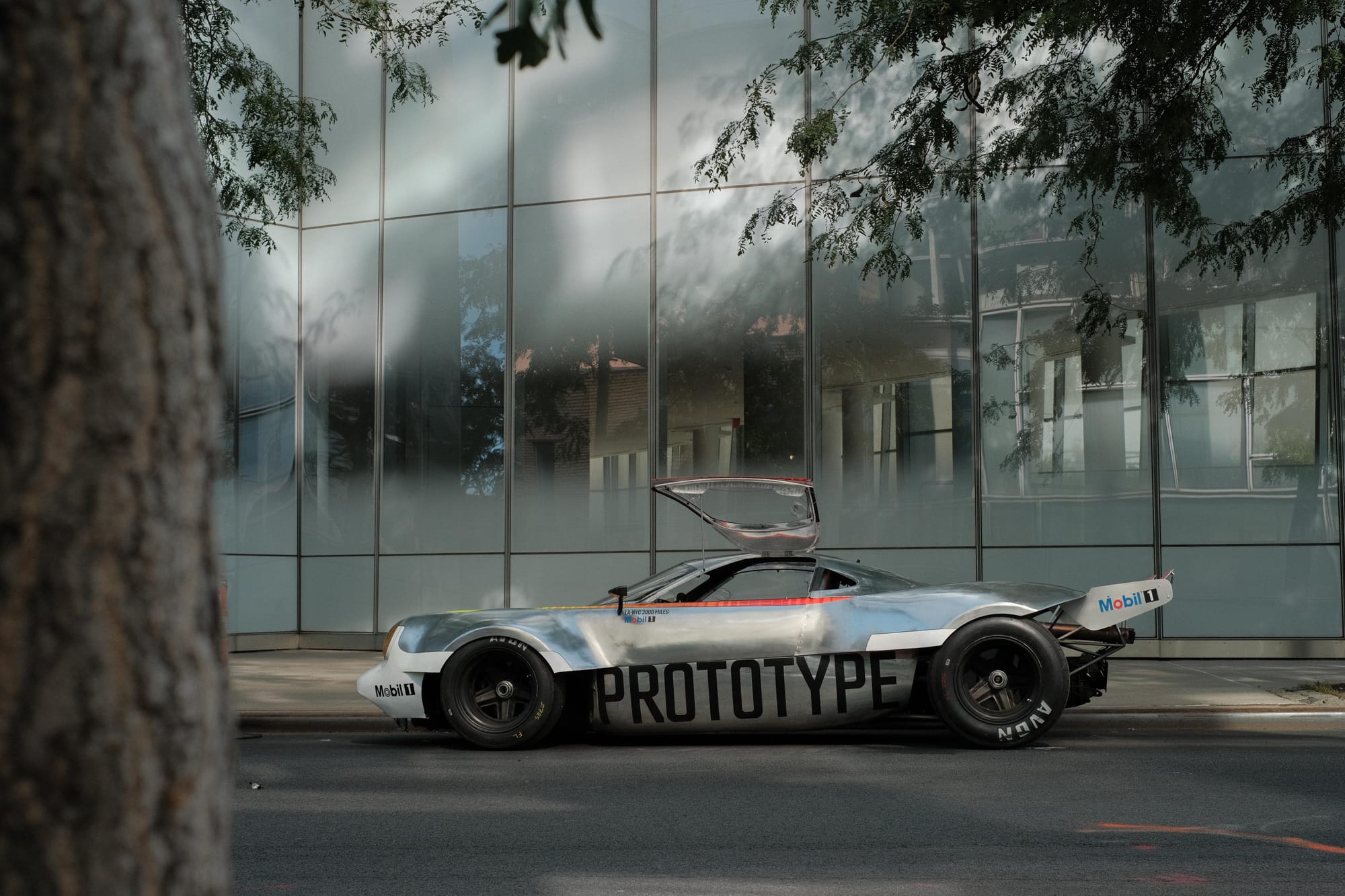
It took us a year probably to decide, then my brother Iliya created a sketch. It was the back half of an Interscope Indycar and the front half of a 911. This sketch became, we were just like okay, we have to do that, let's go chase that. Obviously it's evolved so much since that. We have shared basically the entire process with the internet, which is again, very different from what we do in car design. Normally everything is secret. You go to a car show, you unveil a car, everyone claps, and there's no behind the scenes. So we wanted to lift that veil a bit and show people how a car gets developed. Part of it was also to learn on our behalf, because when we started the project, we didn't know how to weld, didn't know how to metal shape, didn't know how to do much of anything, so a lot of people, you could call them haters, they were basically like oh, this is shit, that's terrible, and we were like okay, we should probably get better. So it was an education by fire, I would say.
It's really interesting. You were talking about the storytelling aspect, and that ties directly into the whole photoshopped backstory that you did with this car. When I first saw it I thought maybe it was a satirical wind up, but actually it is playing to that storytelling, what if this was actually the case, these cars existed. Did that help you as designers give you the context around building this car?
You are exactly hitting on it. The historic thing always comes up because it's like oh, are you trying to make people look dumb or something? The intent was never to make people look foolish or anything. Really what it was is, as designers we are always looking 10 or 15 years in the future, we have to imagine technologies, we have to imagine that world, and with this project, we had to create a world that limited the scope of what we could do, and part of that was creating these images, seeing the car in the context of the other race cars, the fashion, the architecture, the graphic design of the sponsors, and being like okay, does it fit in, does it not? So it was a little bit of a visual check for us. It was a little bit playing with the whole disinformation thing. What's real, what's not, shocking people out of the blasé condition. You are just scrolling on Instagram and what forces you to stop is something that's like wait, is that real, is that not real? And of course humour, some of the Photoshops we did were definitely supposed to be funny, they are not trying to trick you. It's a joke, have some fun, because all car design is just so damn serious.

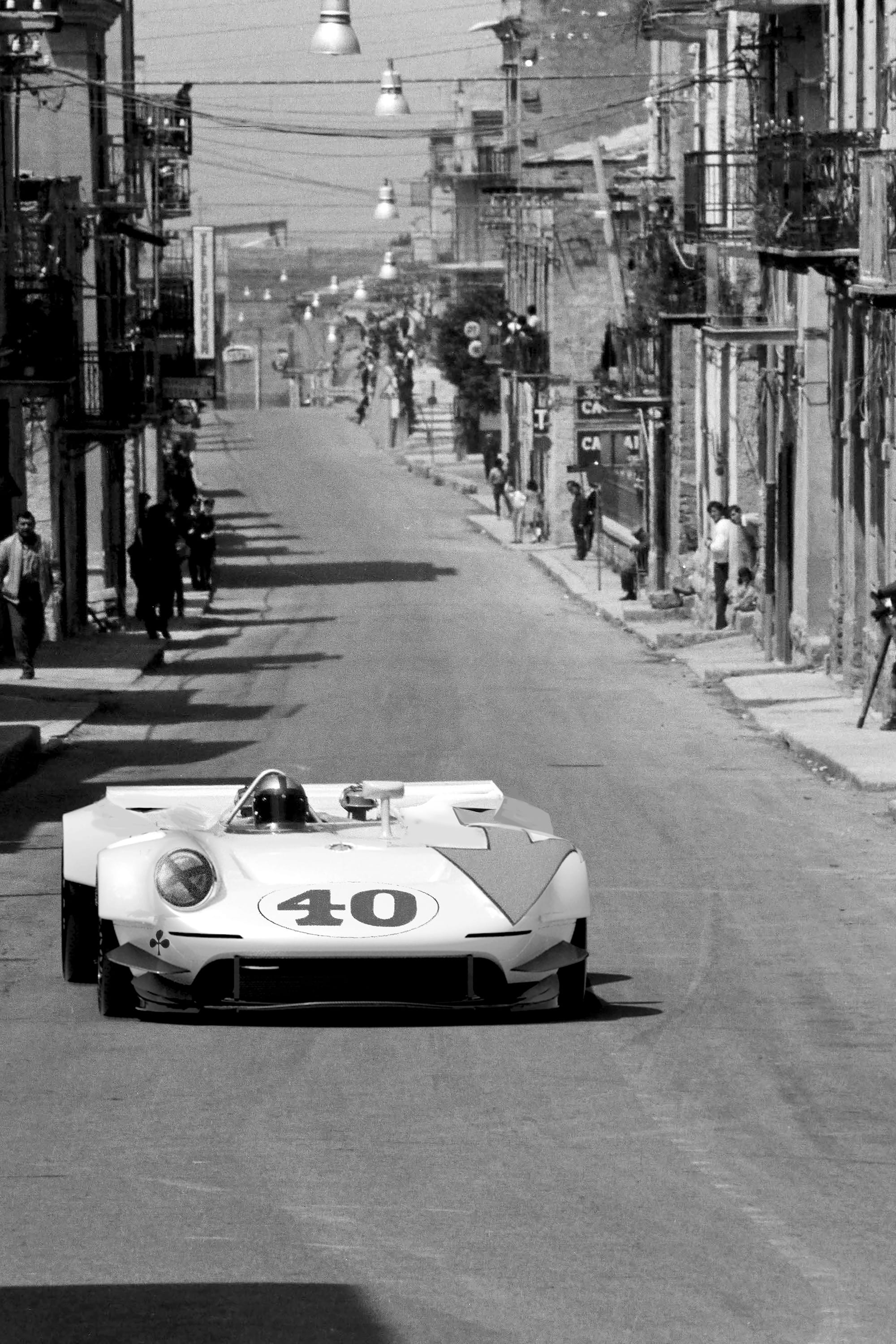
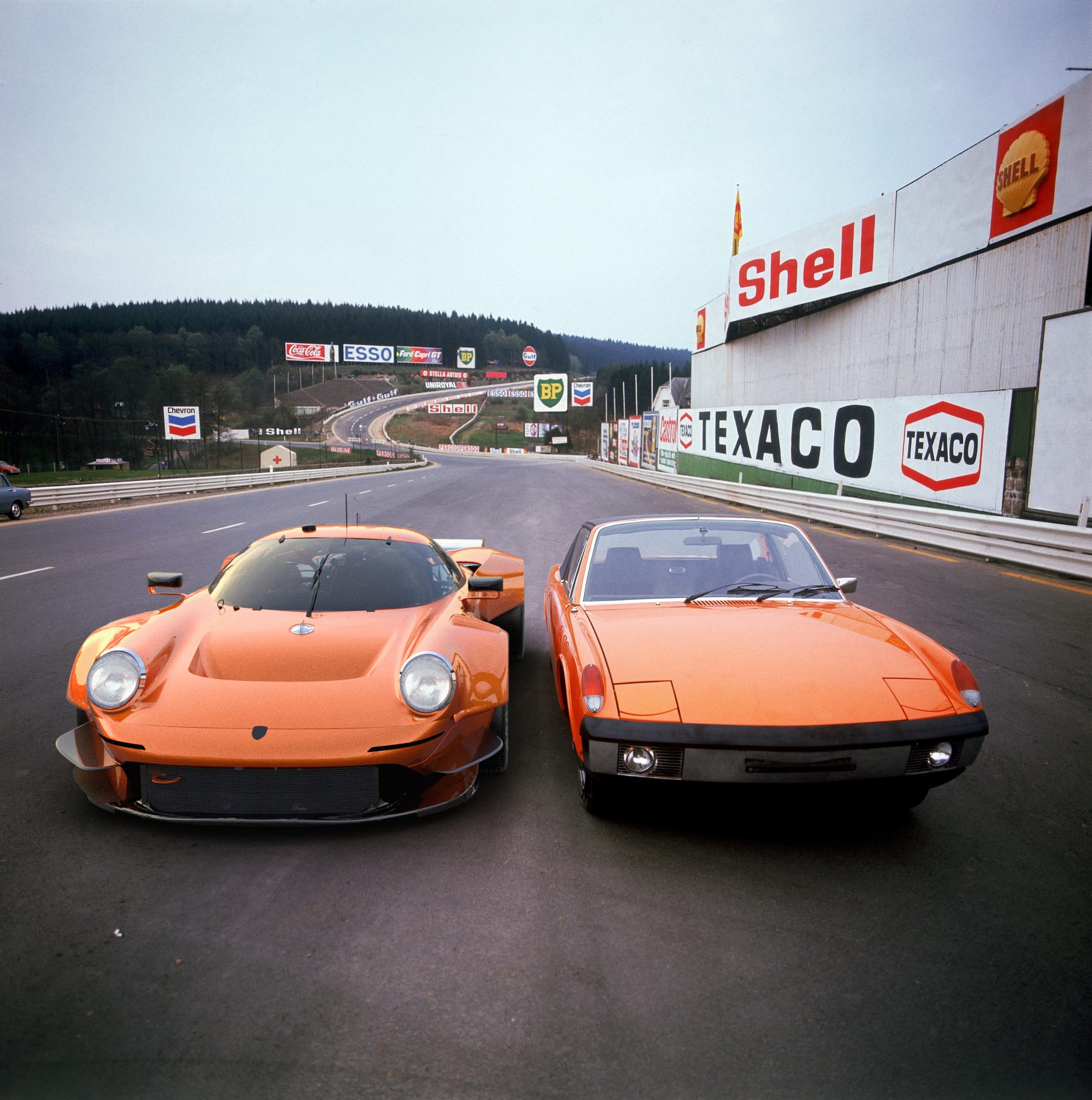
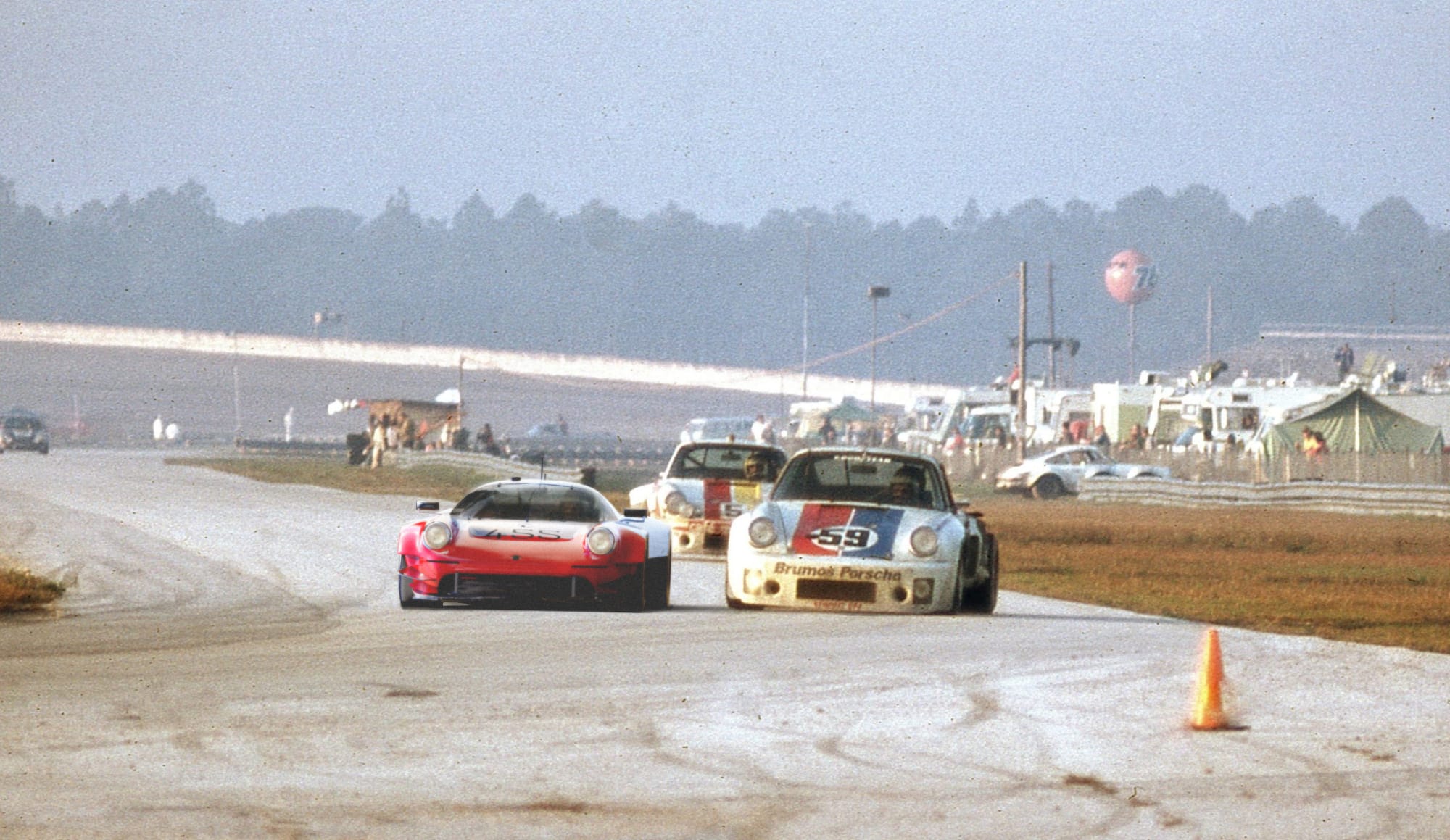


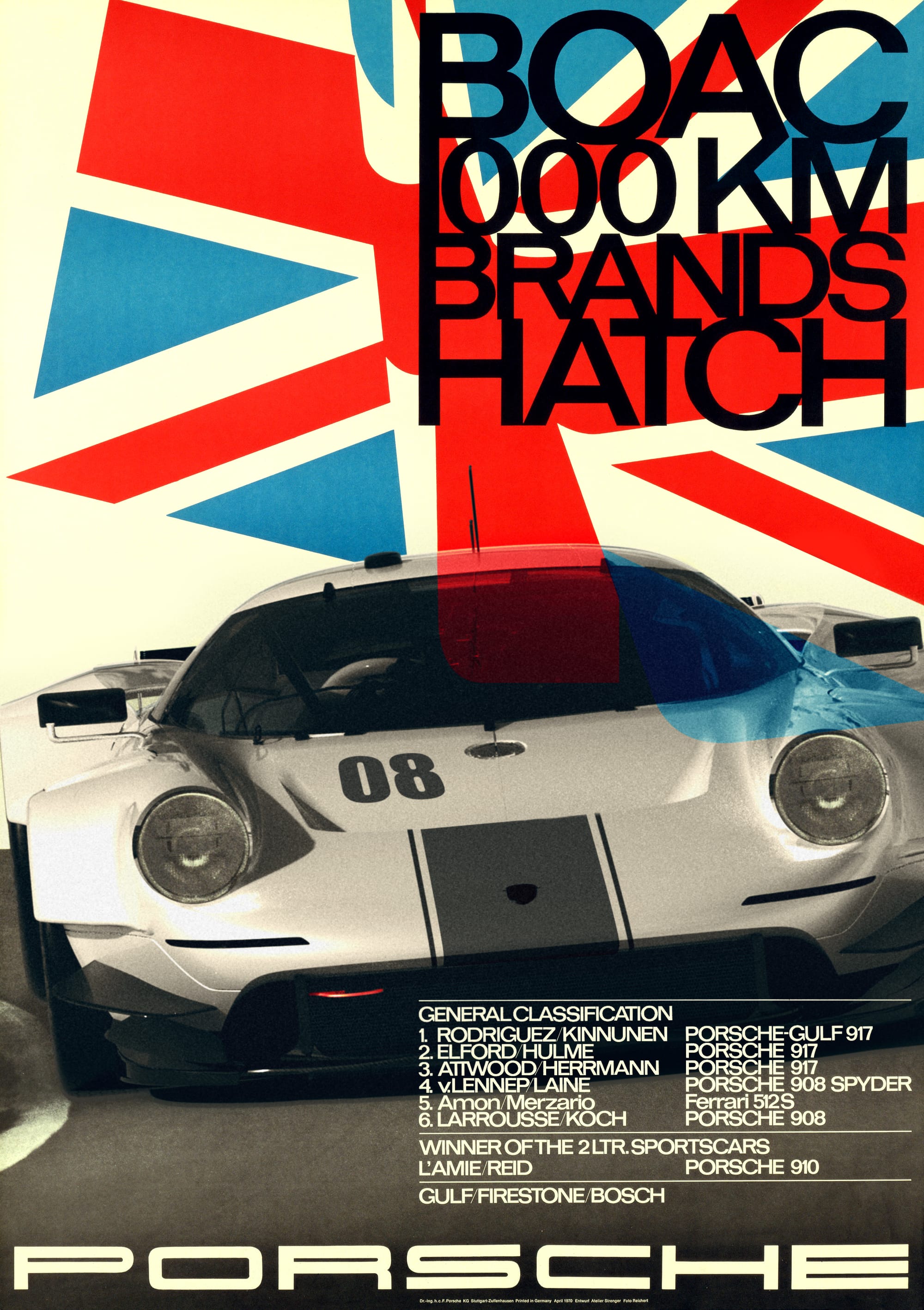
Source: Oilstainlab
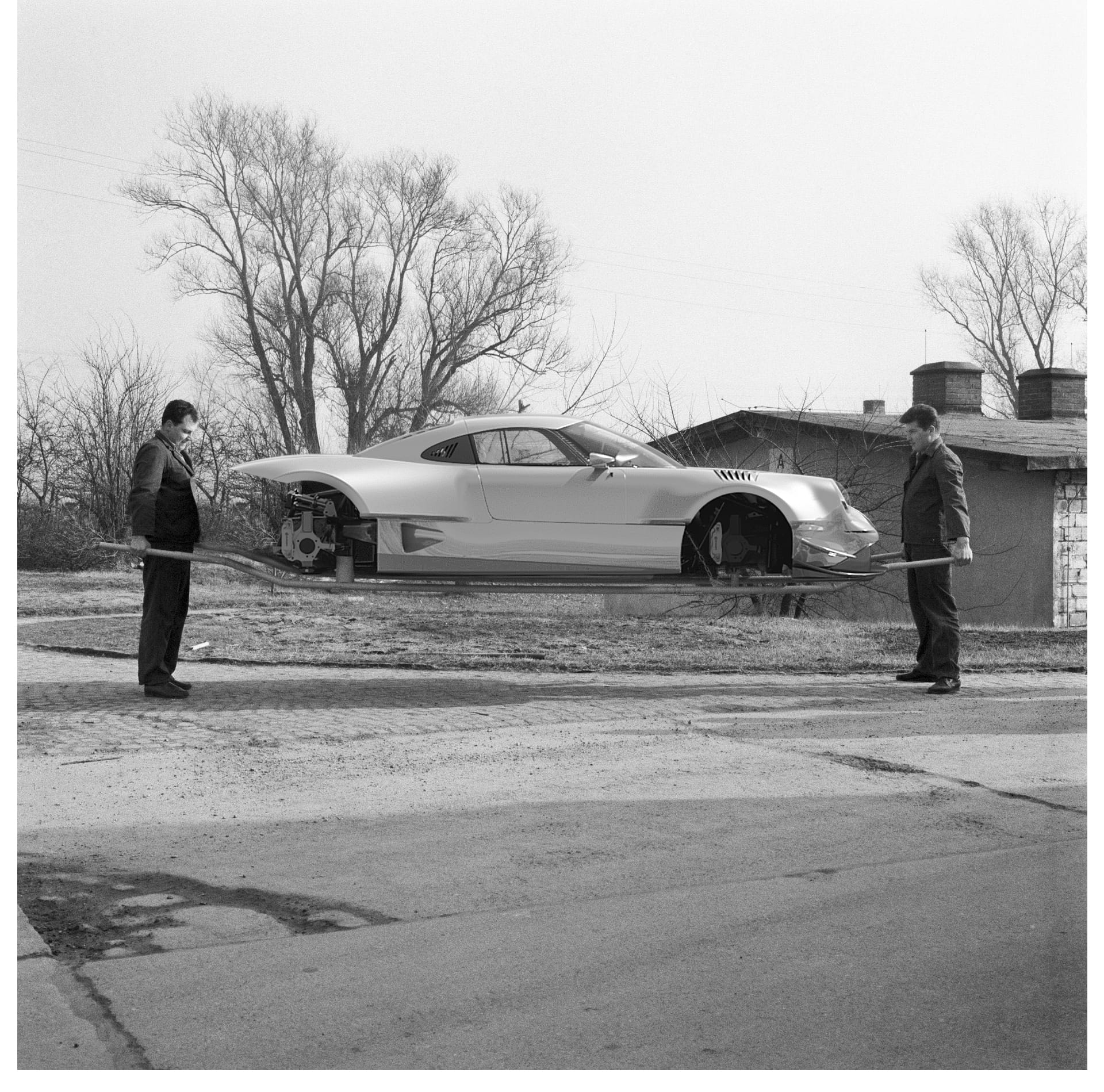
They were brilliantly done, whoever did them, fair play, they were absolutely fantastic. It did make me smile. On the design specifically of the Half11, when I was looking at it, I was reminded of the design adage, a design is done when there is nothing left to take away, and I don't think there is really anything you can take away from the Half11, it doesn't even have a windscreen. Was that something that you had front of mind when you were designing it, or is that a bit too text book and not the approach you wanted to take, that wasn't really what you were thinking?
Again, you are hitting on exactly what we were conceptually trying to achieve. I think in modern car design, everybody adds things to be different, and we really wanted to subtract things, because again, we were bored at our day jobs, it's the same approach, it's formulaic. So the idea was to subtract things, like how minimal can you make things? What can we get rid of? Obviously it started with basically half a body, then we decide okay, that looks cool, but it looks really crude and home built, it was more along the lines of the Bergspyder, the hill climb Porsche car, but then it evolved. Let's put some rear fenders on it. Now actually it's a coupe which we did for our cross country trip, because we couldn't imagine driving 3,200 miles in that thing with no roof and no windscreen, so it slowly evolved. We had no real skills to make complicated stuff, and to make things takes time. This was a weekend project, so there's a number of other reasons that are less glamorous of why minimalism was a good approach, let's say.
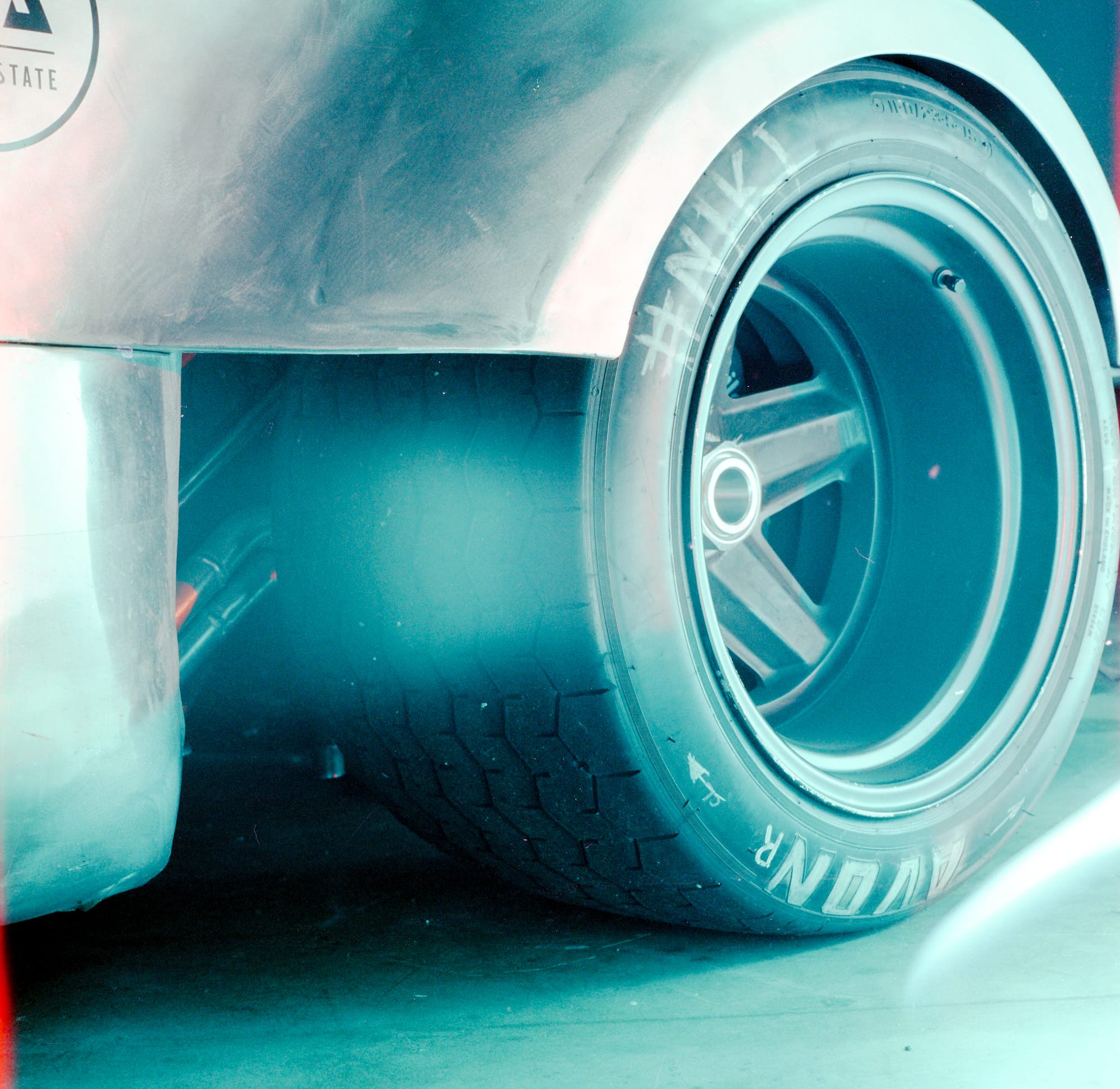
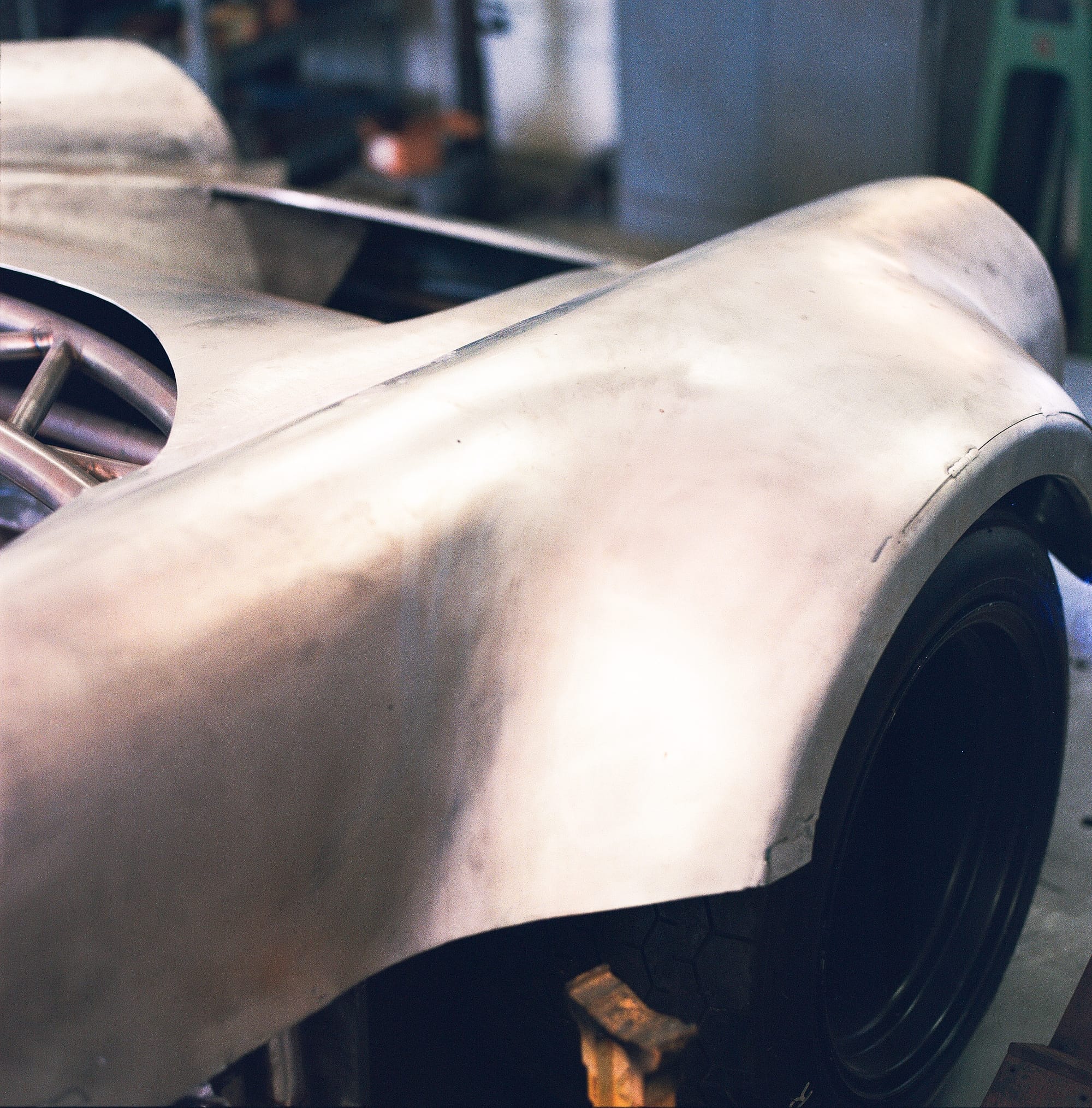
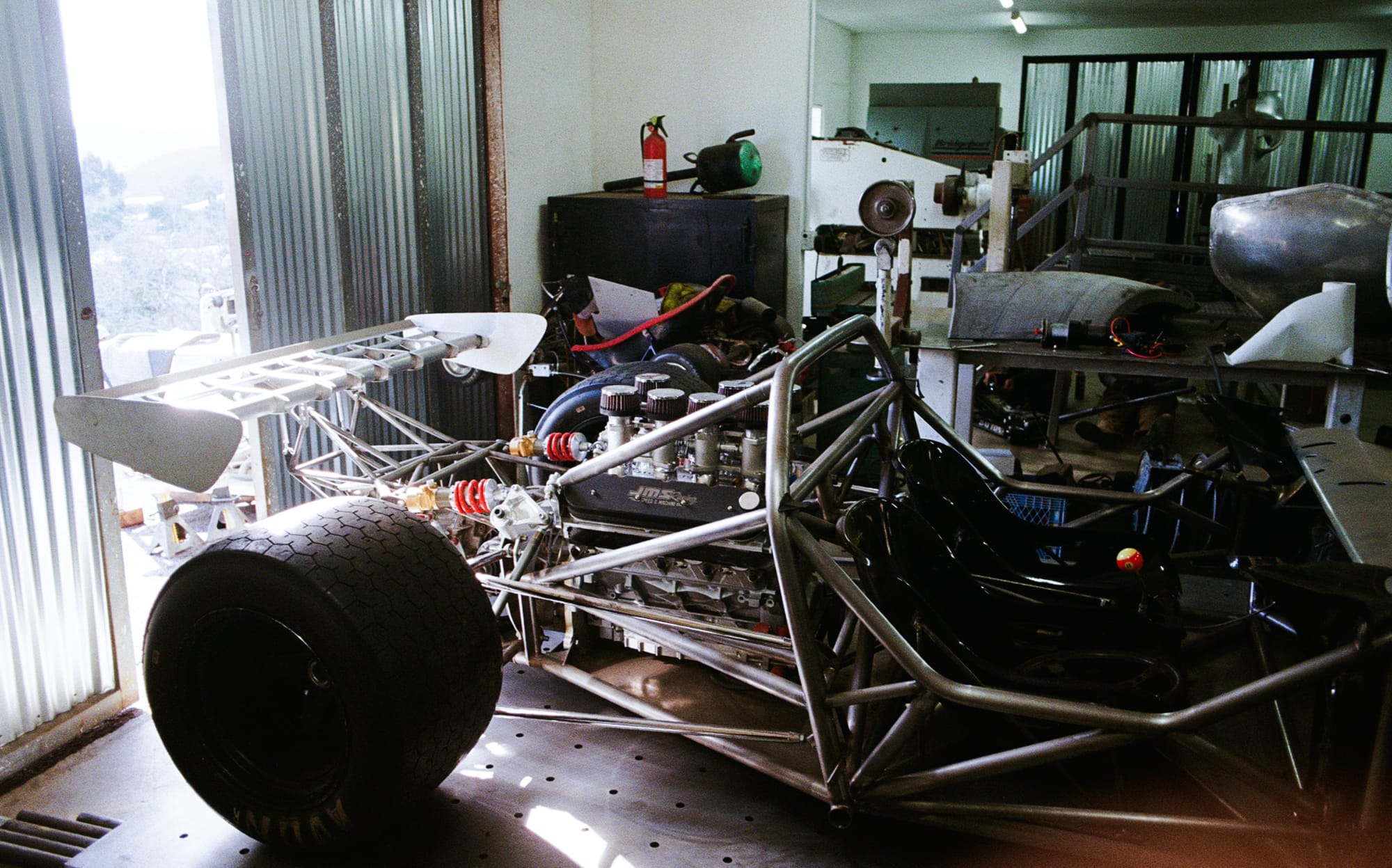
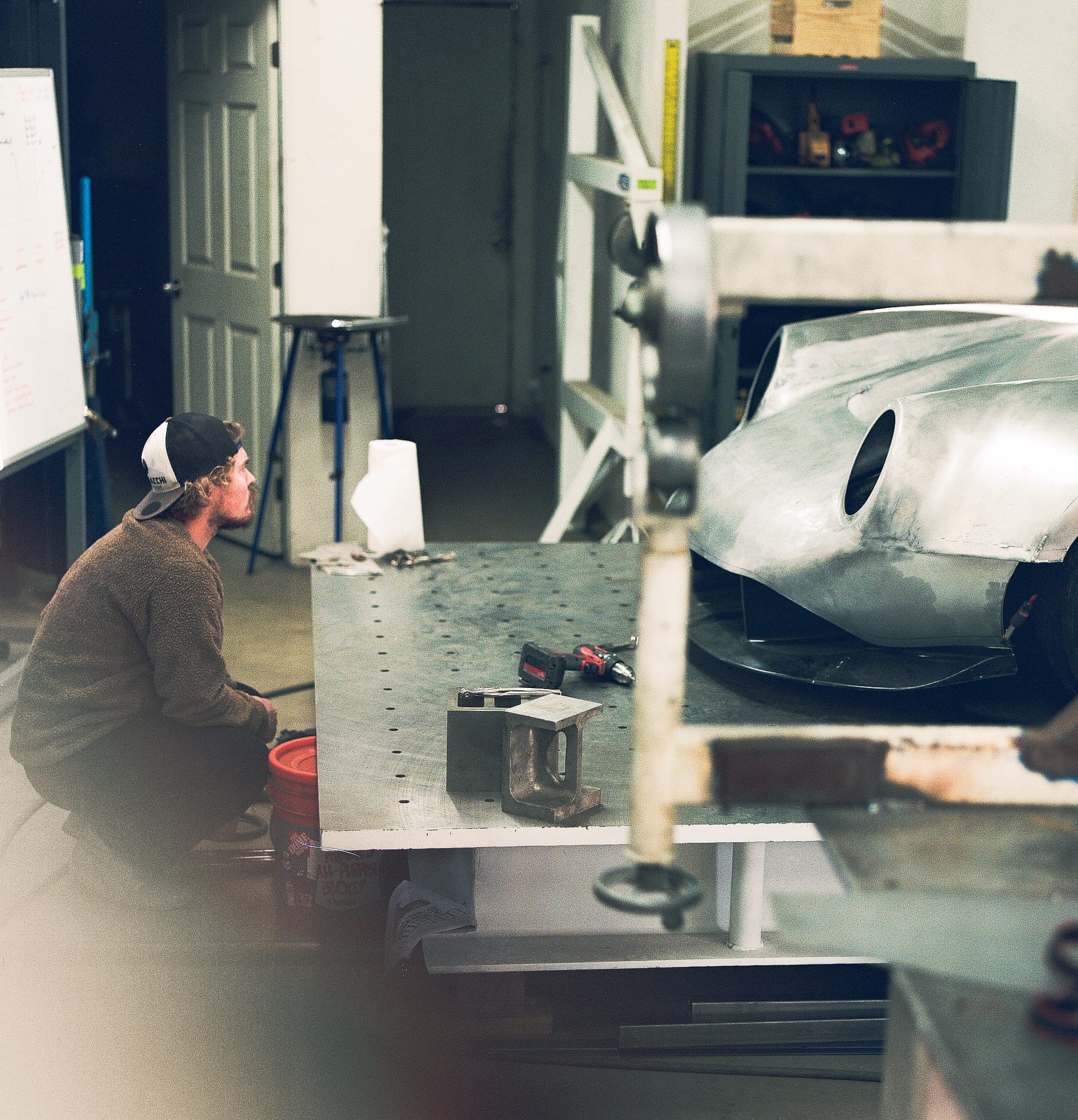
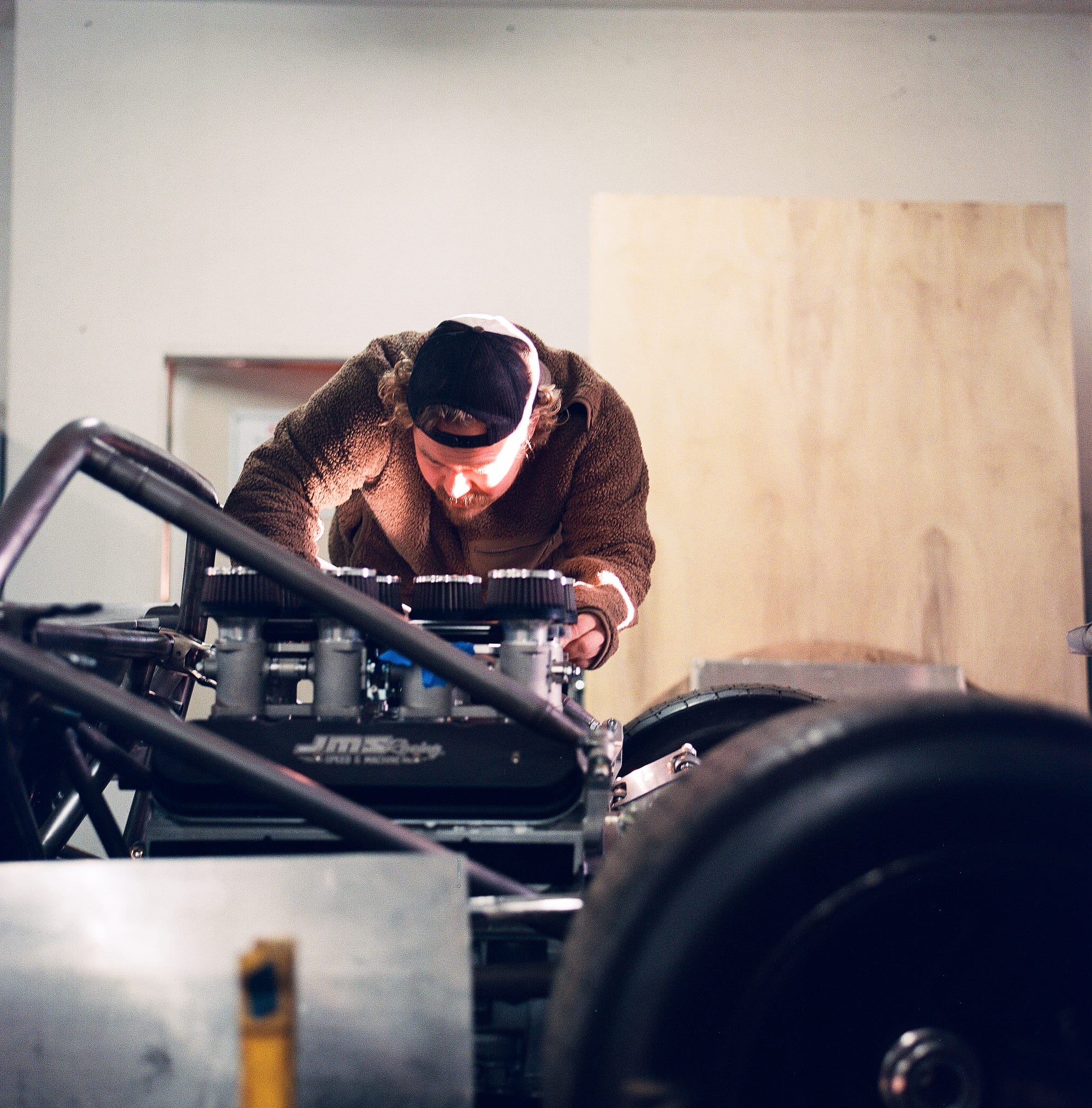
You touched on it there, I think you drove it from California to New York for the Montag rally, what was it like to drive?
That trip was super special for all of us, it's the king of bad ideas. Up to that point, the longest drive that car had completed was 80 miles, so it was a little bit of a hope and a prayer. We got together a really good film crew so we have a 9 minute video that will come out soon about that. The car is pretty comfortable inside, more comfortable than our 73 RSR Tribute, straight piped. The Half11 is much louder inside than the straight piped RSR, but the seating position and everything in the Half11, it's designed around me so of course it's comfortable for me, but if you are taller than 5' 7'' it's trouble. It was a little bit toasty. Honestly it was good, it was very comfortable. It's not super stiff or anything, it's a comfortable car. It just gets a lot of attention. Every single car that passes you has their phone out, so it's a little dangerous. You're just like, are you paying attention, are you going to hit me?
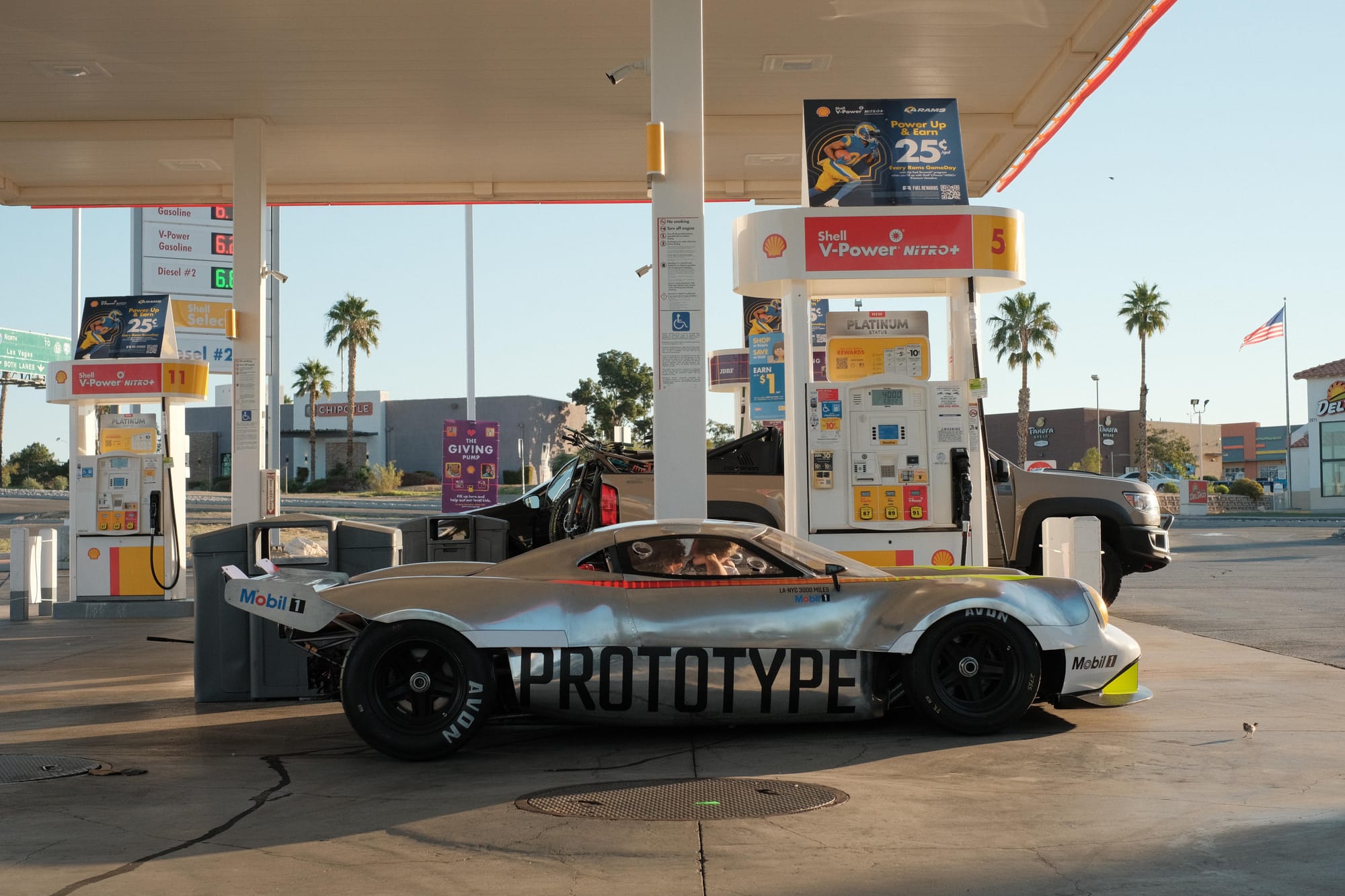



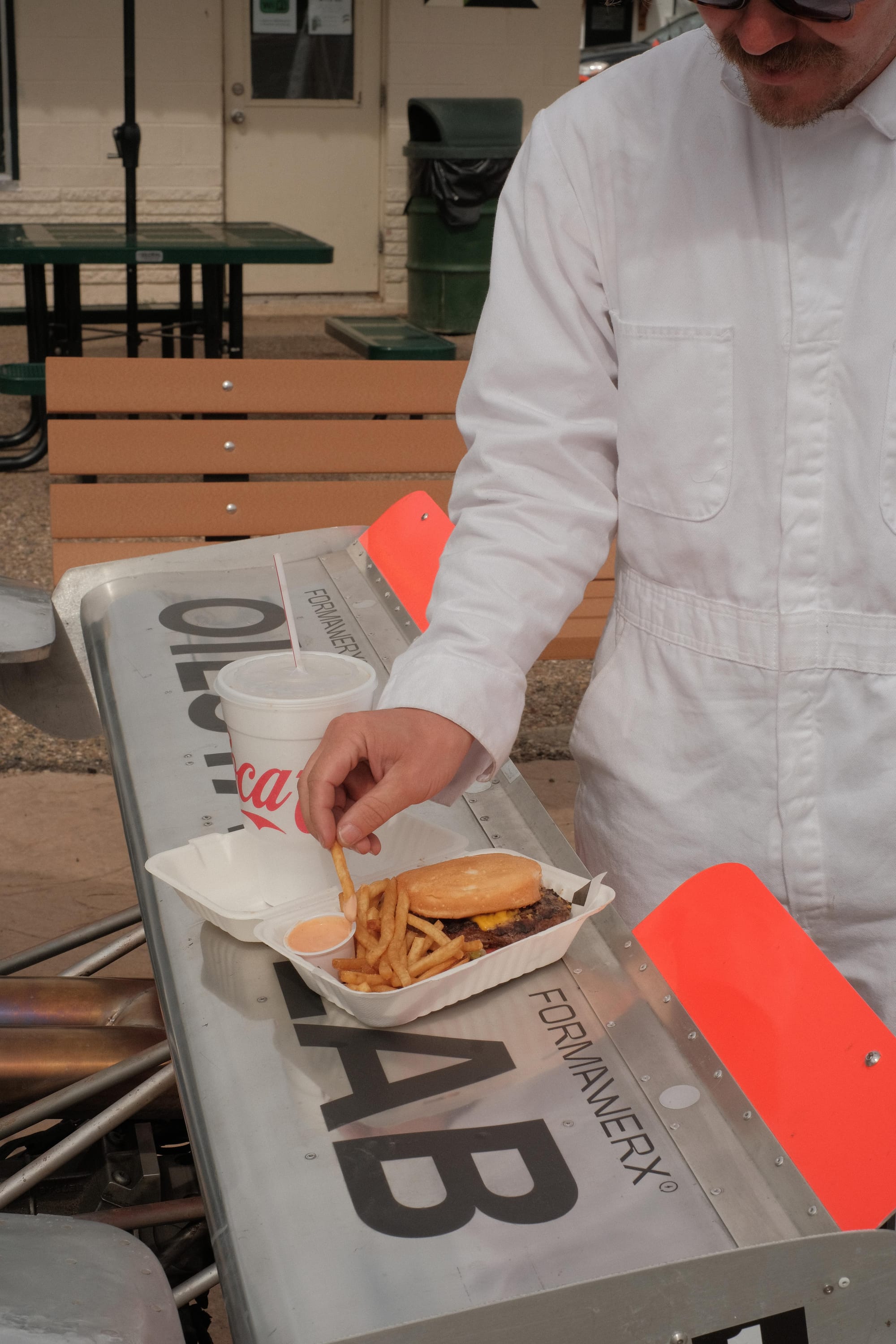
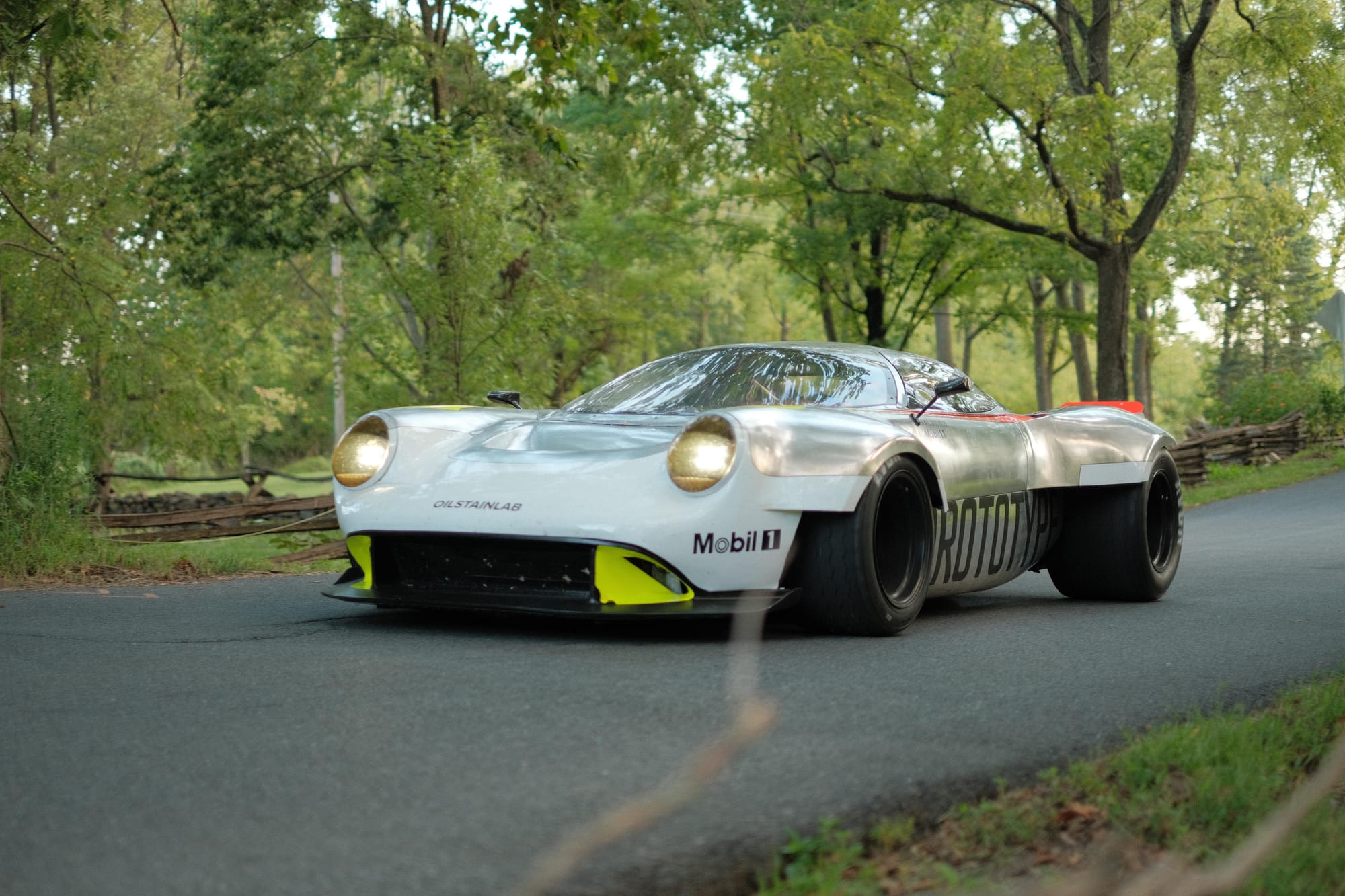
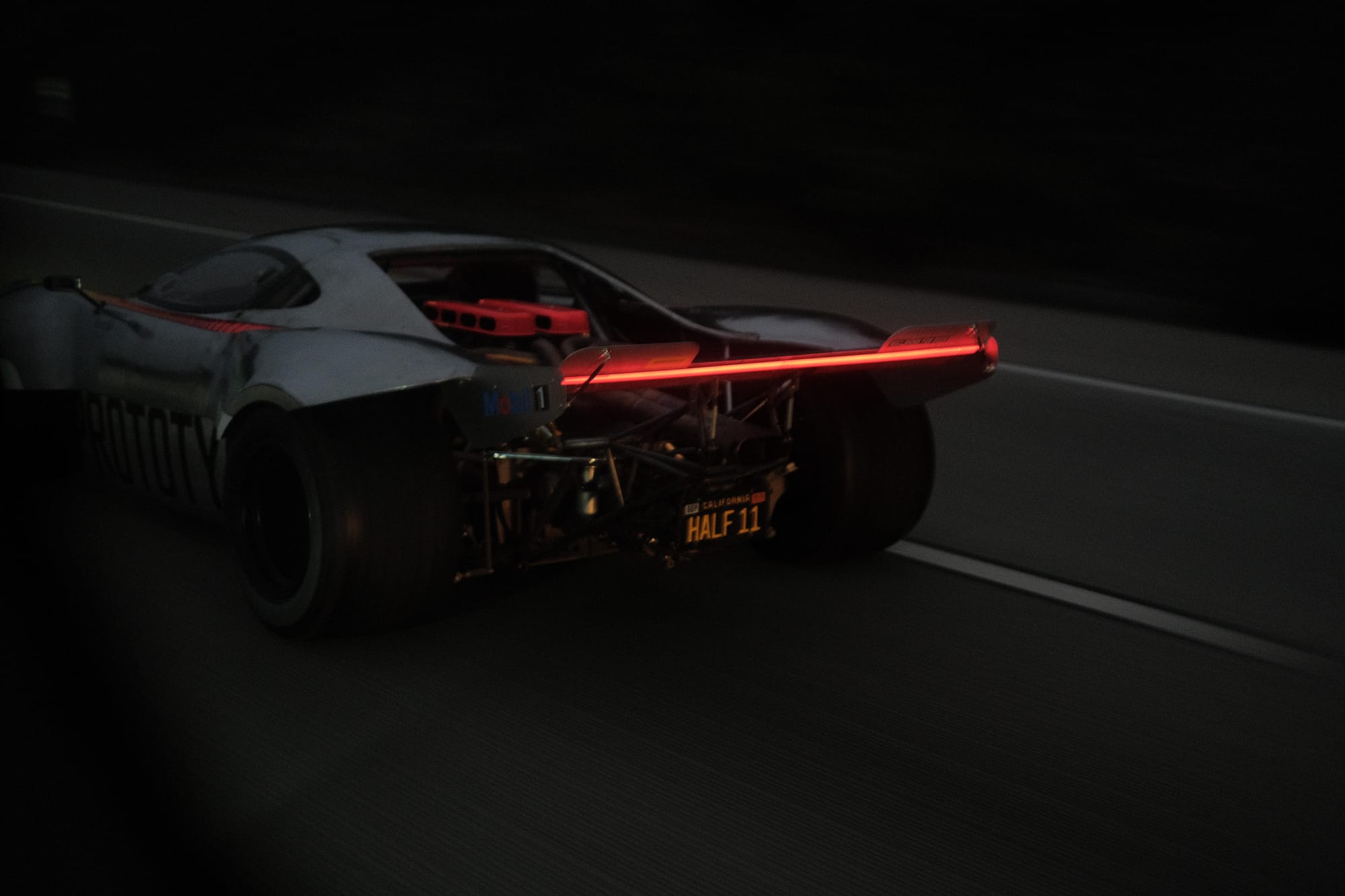
Source: Oilstainlab
To get a little bit nerdy, what are the components of the car, what engine did you put in it?
This is effectively the prototype, so the most controversial part is the engine. We have a custom built LS V8 in it. It has a crazy big bore, really short stroke, so it revs out to 8,500 RPM. About 650 horsepower on pump gas. The transmission is a 996 GT2 Porsche box that's been flipped upside down for the mid engine application. The front suspension and everything is, because we retained the 911 tub, so the steering front suspension is all basically really high end and heavily customized RSR Porsche stuff. Then the whole rear suspension was designed by Joe Scarbo here in California, all the inboard suspension, everything, and structures were designed by professional engineers, so it is somewhat safe.
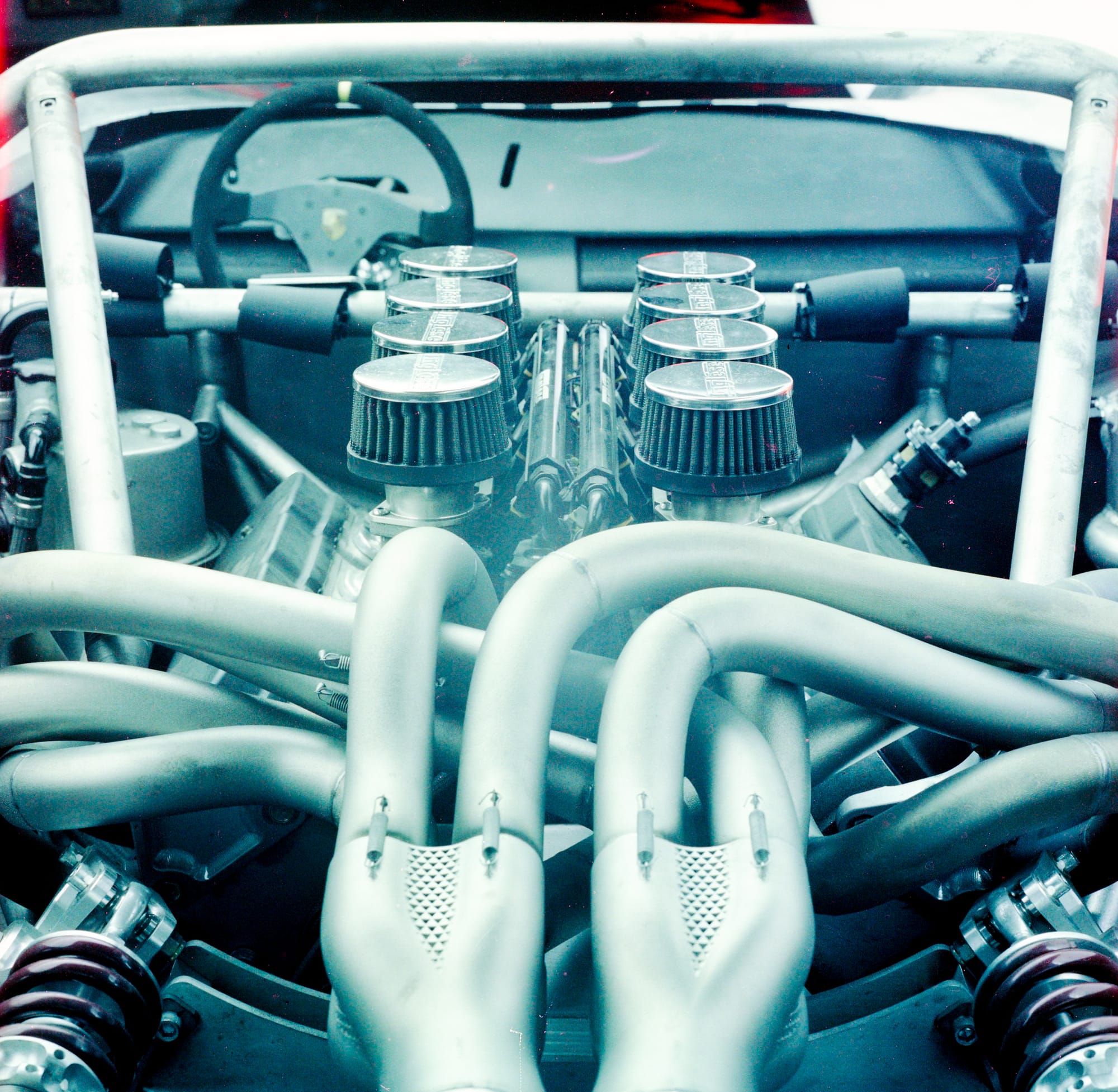
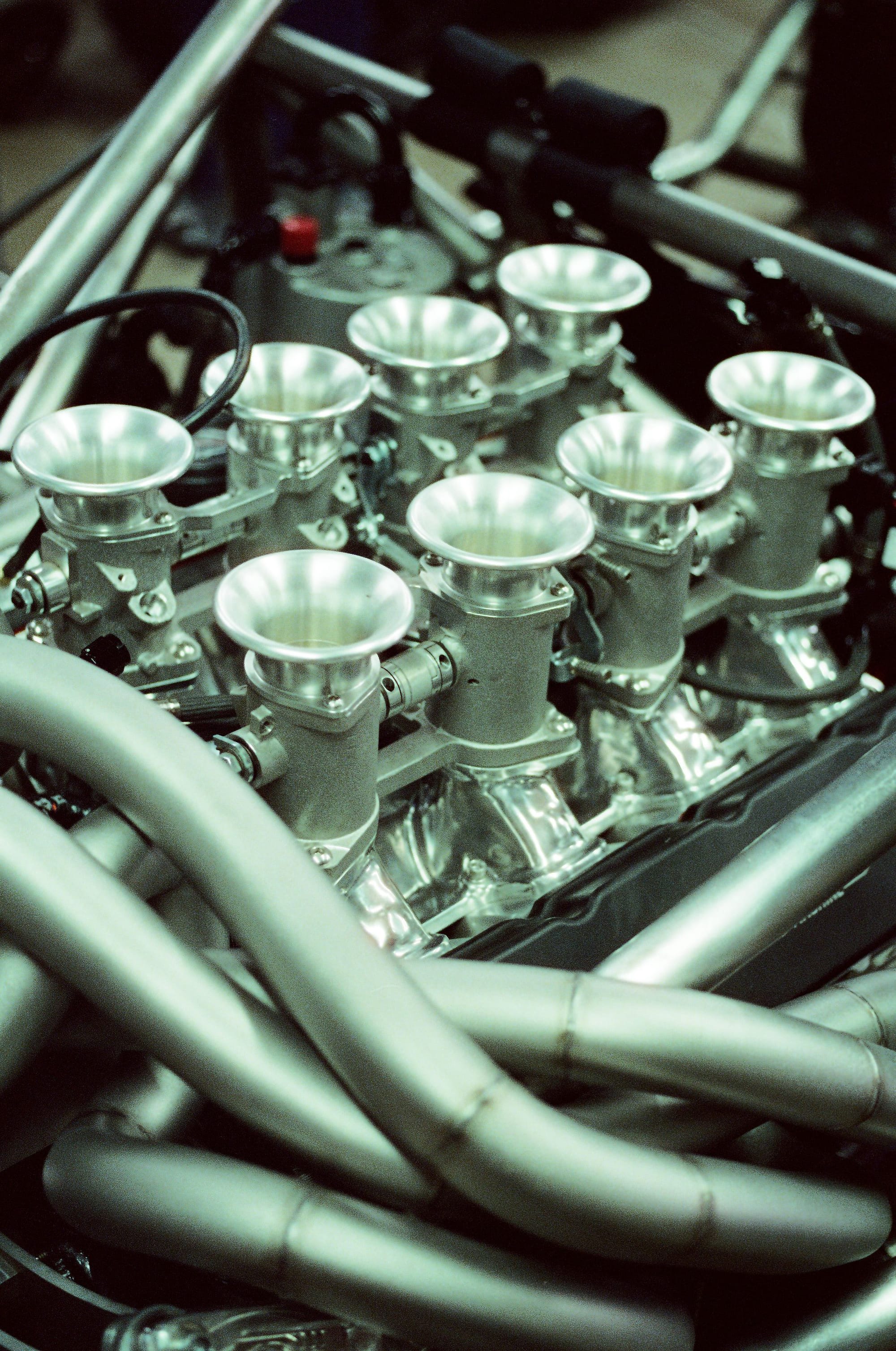
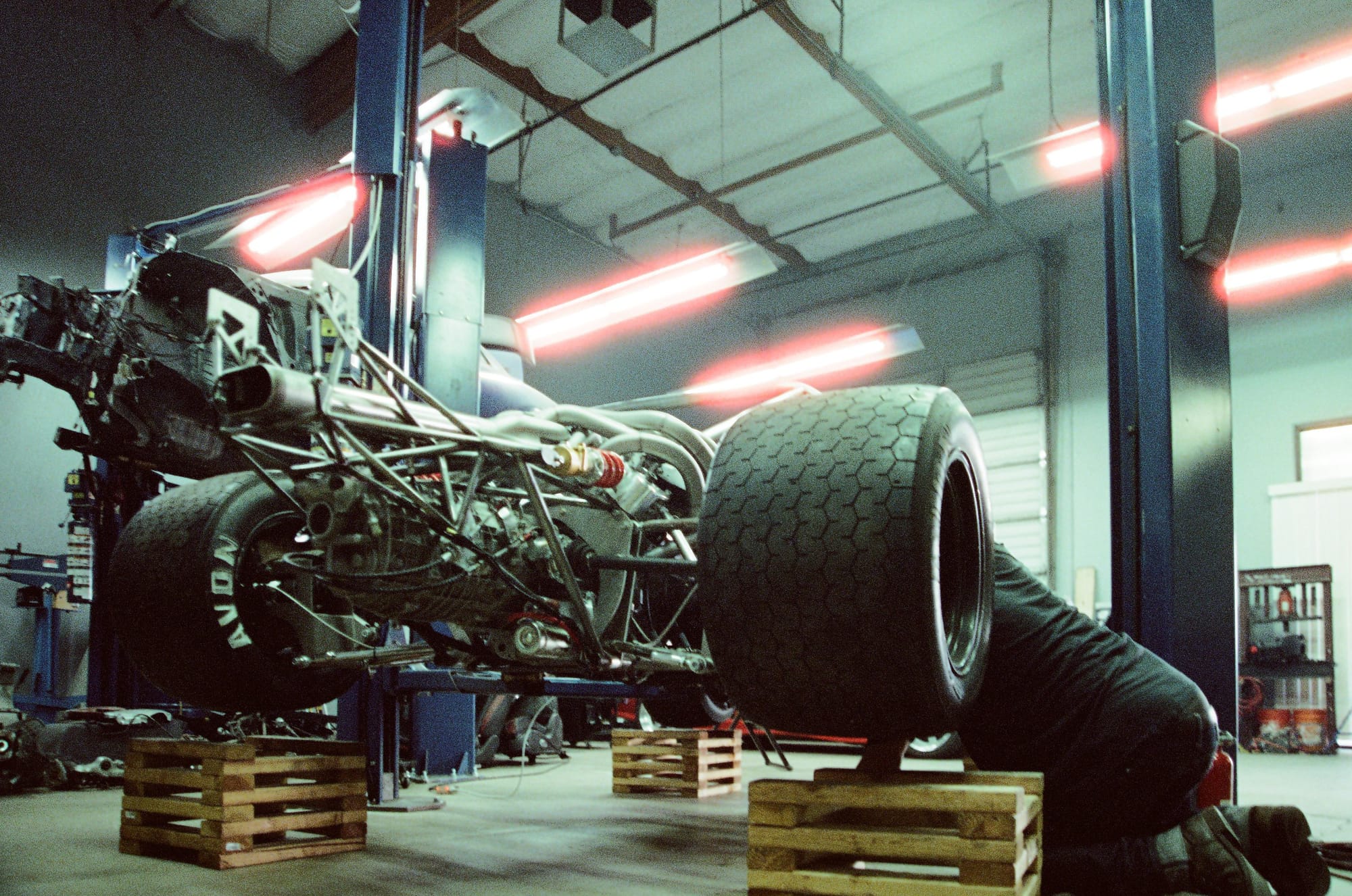
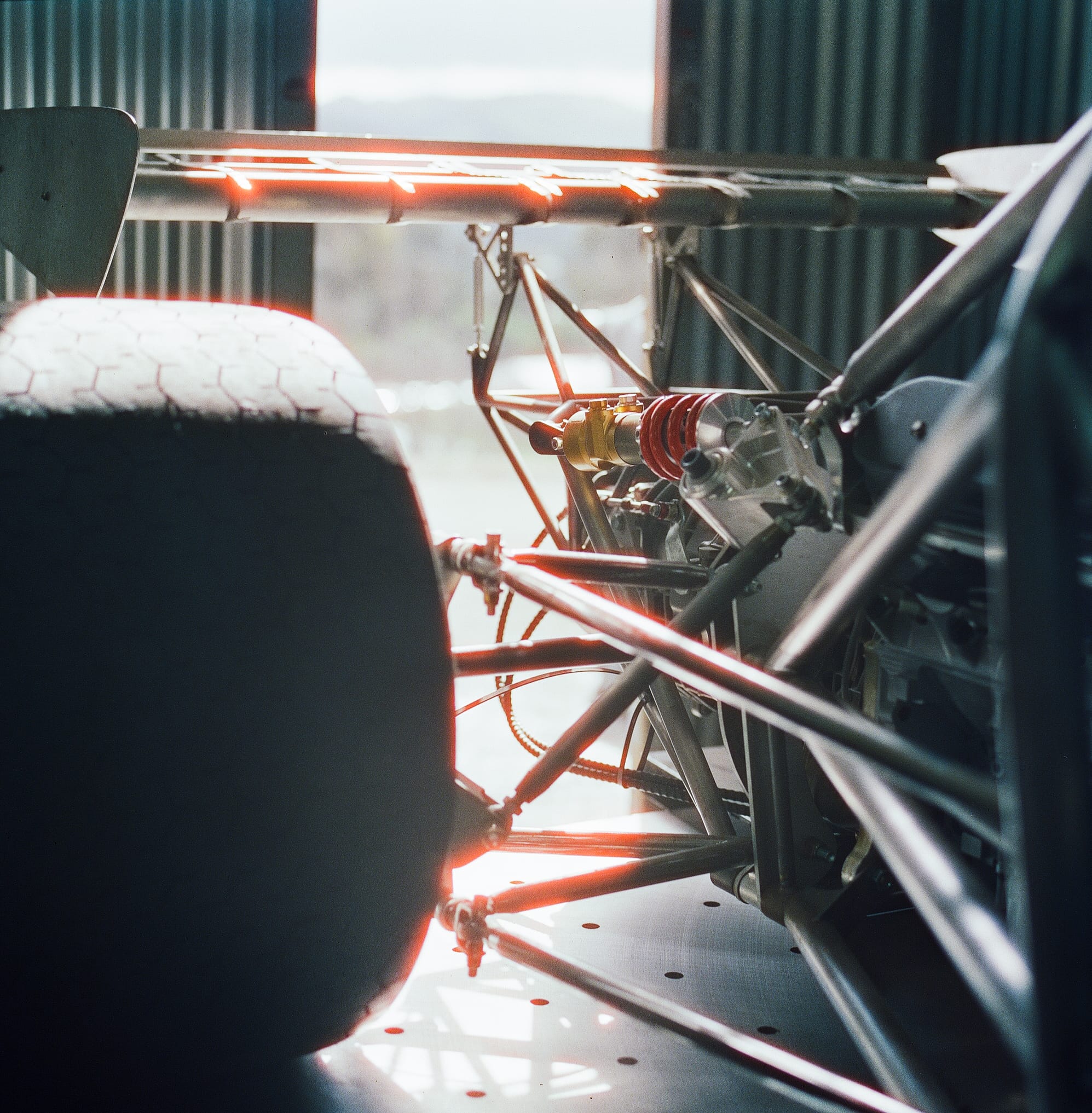
It's interesting that you mentioned the gearbox was out of the 996 GT2, that's actually one of my favourite Porsches. I don't know if you've ever seen the Mischief movies from the early 2000s with Rob Lonman on the Gumball Rally, so is there a commercial element to this, can people buy the Half11?
It's been a great surprise to us to see it being advertised on different websites. No, technically you cannot buy a Half11. We have had quite a few people reach out this. This was never a commercial product, it basically has no doors, it's hot, it's cramped. It's my brother and I's love letter to an era, basically. We just want to be part of that era. That's our dream. We haven't built a time machine, not yet, but when we do, that's where we are going, we are going to Spa, 1972. We are working on something that is basically commercial, that's the next car, loosely based on that but a very different approach. The approach is much more what we do as our day job. Let's say it's a professional designed engineered car, it's much different but similar.
Will the Half11 be making any public appearances? I heard rumours it might be at Aspen, is that true?
We are getting ready for a new livery. We've got a ski rack for it. It's definitely looking like we are going to be there, then we are pushing to try and do a Goodwood run this year with it, so we will see.
That would be epic. I would love to see that go up the hill, that would be so cool. I almost prefer the fact that the Half11 is, you can't just buy it, it is literally you and your brother's vision and love letter, like you said. You don't see much of that so I think it's really cool and I take my hat off to you. What is next for you and Oilstainlab, can you tell us anything more about the next project?
The next car we are basically going through a lot of the final production engineering on it right now. Like I said, it is very loosely based on what that car is, just much more modern. The Porsche purists will be thrilled, it will have flat six power so don't fret. It is no longer 911 based, it is a bespoke car, fully bespoke chassis. We have started with a blank sheet, there is nothing carry over, completely new. It is our vision of what is missing in today's world of high performance cars. We don't call it a supercar, we don't call it a hypercar, it's just what's missing in modern day cars. A lot of it is just bloat and weight, so it's a very compact car, it's very lightweight, it's pretty extreme. That's all I can share.
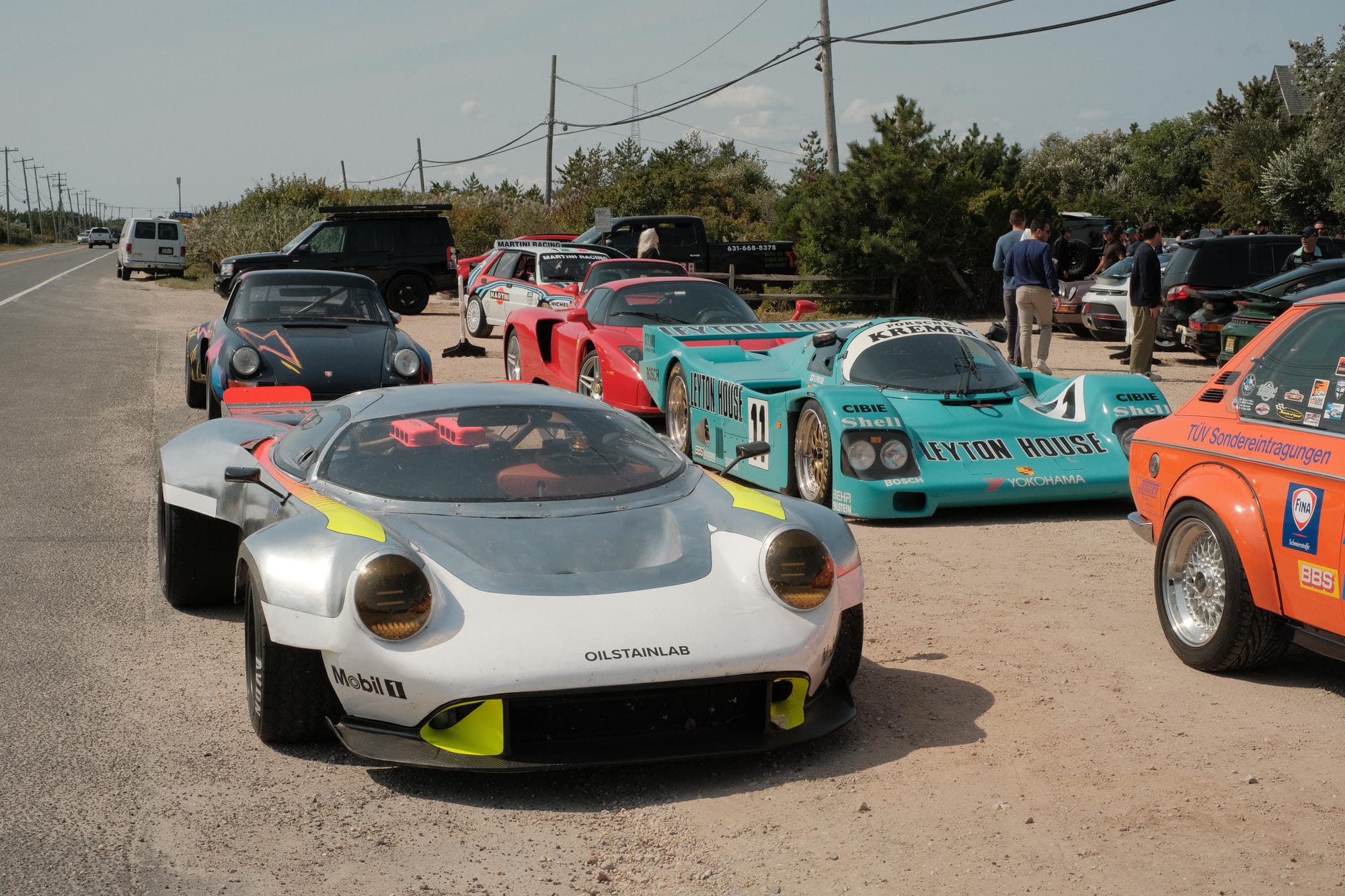
That sounds amazing and I really do look forward to seeing it, so best of luck with all of that. I think to end on, I was actually going to ask you a few quick fire questions. I am curious to know what is in your opinion, the most beautiful car ever made?
Impossible question. There's so many ways to evaluate beauty, whether it's form and function, whether it's just pure styling. I think it's hard to argue with the beauty of a Ferrari 250, or any of those variations, a Jaguar E-type, just from pure styling. For me I generally gravitate towards the beautiful GTs. Having said that, I have such respect for what Gandini did, and probably my one favourite car is the Countach, the very early one, a Periscopio, but I would argue it's not necessarily a beautiful car, but it's shocking, it's interesting, it's challenging. Then of course you have the race cars. I am losing my love for the 330 P4 slowly. I can't go there any more, I am starting to question my choices. That's probably what I would have said five years ago, but it is eroding. I don't think there's too many cars past 1975 that I would call genuinely beautiful, because at that stage I think it gets commercial, it gets mass produced, there's limitations. As my eyes become more sensitive over the last 15 years of being a car designer, you start to see things, start getting educated on why things look the way they are, and you can't respect that any more, it's ugly now. It's a curse.
My answer to that question, and I know it's incredibly subjective, you are right, it is kind of an impossible question, but mine is the Alfa 33 Stradale by Franco Scaglione. I was wondering what are your thoughts on that? Did they have a shrine to him in Italy?
33 Stradale is definitely up there, and a similar car is the Thomassima, it's another beautiful car, similar shape to that. 33 Stradale is cool. I think it has one or two awkward angles, and then they are all different, so which chassis do you like? Because the vents are different, the little radiuses are different. 33 Stradale you can't argue with that. I am not a fan of the new car that Alfa came out with, but the vintage one, I have been fortunate to see it a dozen times now. Absolutely love it, so great choice.
I am glad you approve. Who is your favourite designer?
Again, impossible, but I think I just have to go with Gandini, I just love the wedges. I just love what that did and how it shocked people. The purity and the simplicity of all the early stuff, so that's what I'm going to go with. Otherwise I love the Figoni et Falaschi coach built cars, very voluptuous, they are insane. I love those cars, they are so different, so exaggerated, but that was a coach building house, so I am not even sure who that actual designer was.
I might be about to embarrass myself, but did Gandini do the Stratos?
I think he did, yes.
That's my second most beautiful car.
That was Bertone, so yes, I am sure that was Gandini.
Final question, what is in your dream three car garage?
I am going to have to plug myself here, the next car. You would have to have a proper race car. I would want a vintage F1 car. We have a vintage F2 car because that's all I can afford, but the dream is a vintage F1 car, probably 69 to 71, in that era, or a Brabham BT44, that would be very cool. Then I would need a wedge car, so it would have to be a choice between the Pininfarina Modulo, Lancia Stratos Zero, or just an early Countach Periscopio. The third is the hardest, probably some 70s Le Mans racer. Maybe a Ferrari 312, or they did a really cool hill climb car. It was terrible, it got destroyed by Porsche but gosh, it was so cool, so those would be the three.
You have impeccable taste Nikita, but that should come as no surprise. It has been fantastic to talk to you Nikita, thank you so much for coming on. I really do take my hat off to you and everything you are doing at Oilstainlab, and I wish you the very best of luck.
Appreciate it man, it's been fun, thank you for the fun questions.

